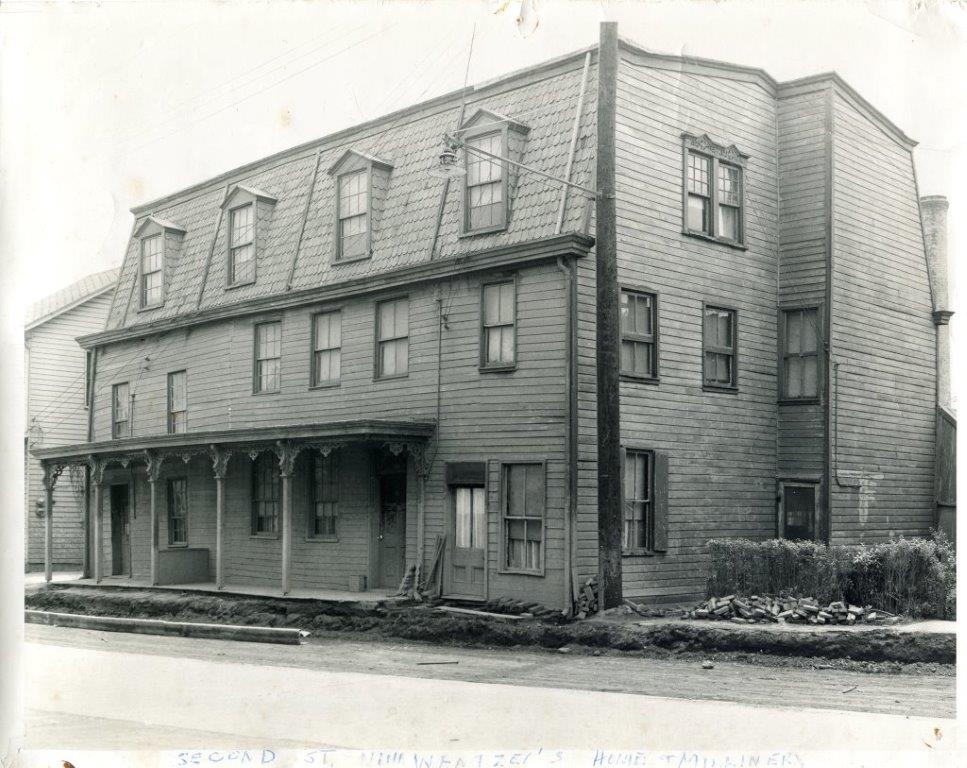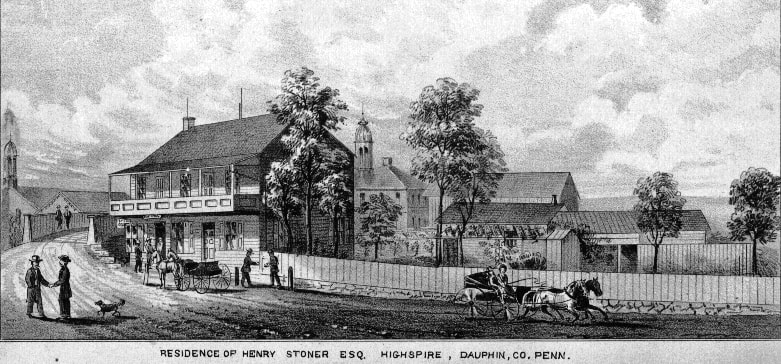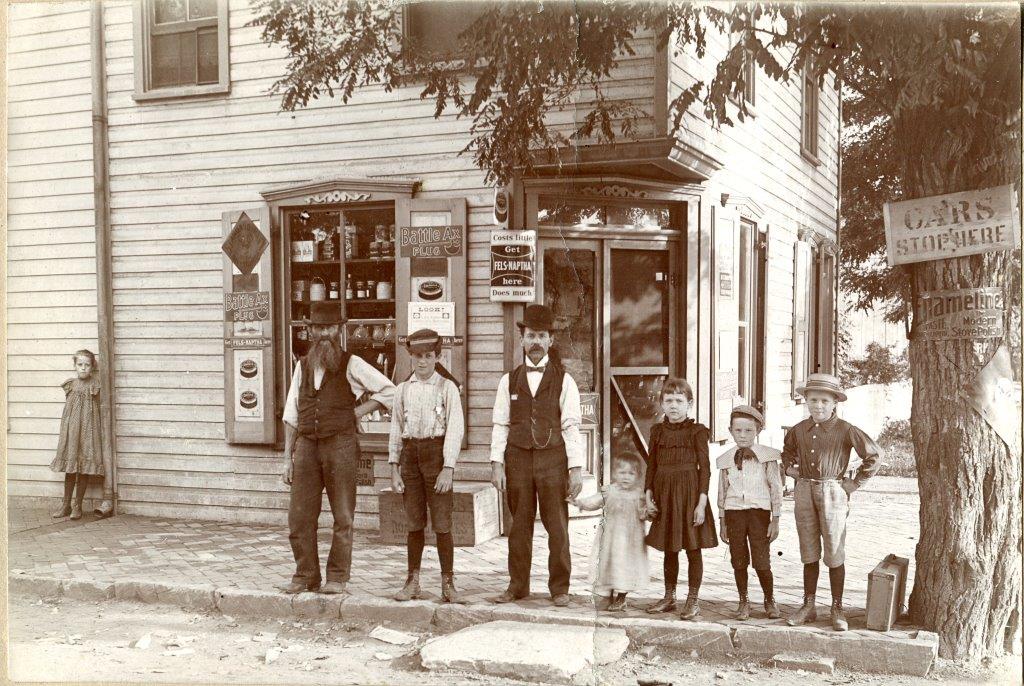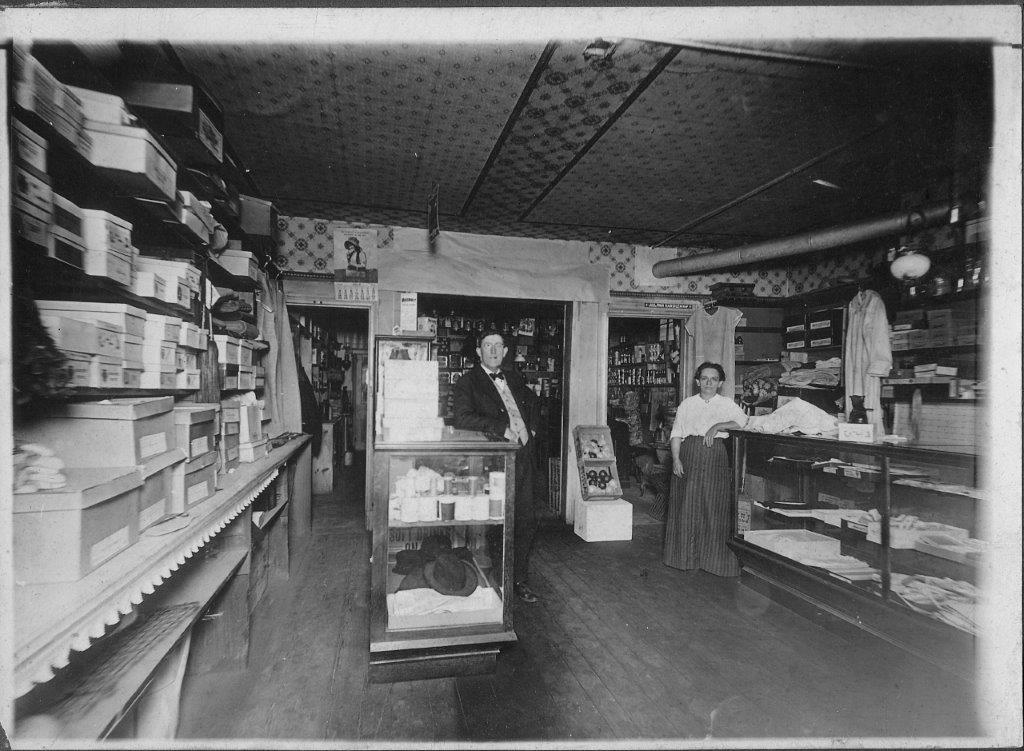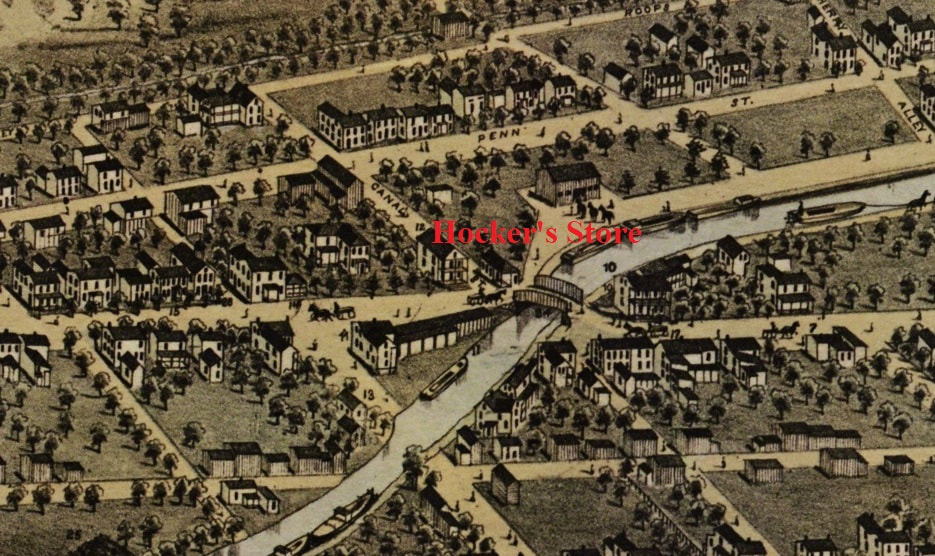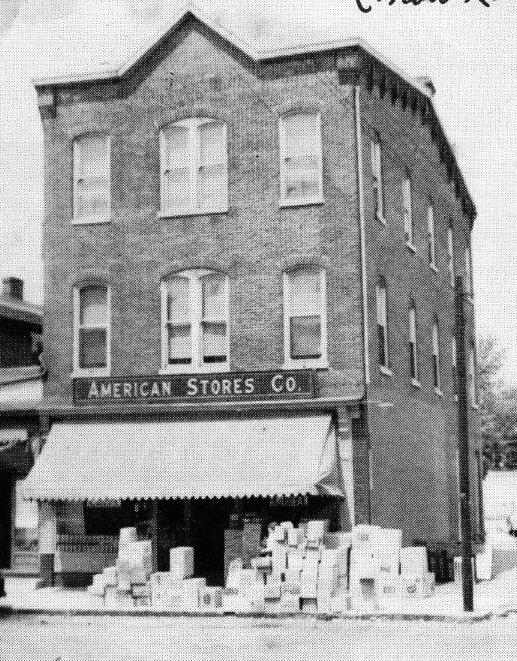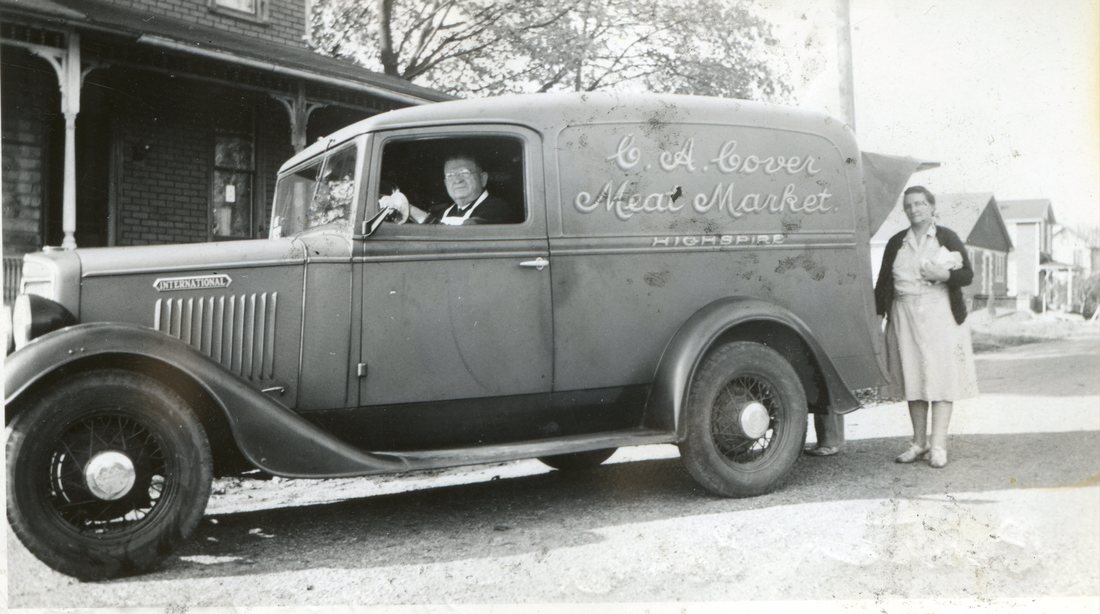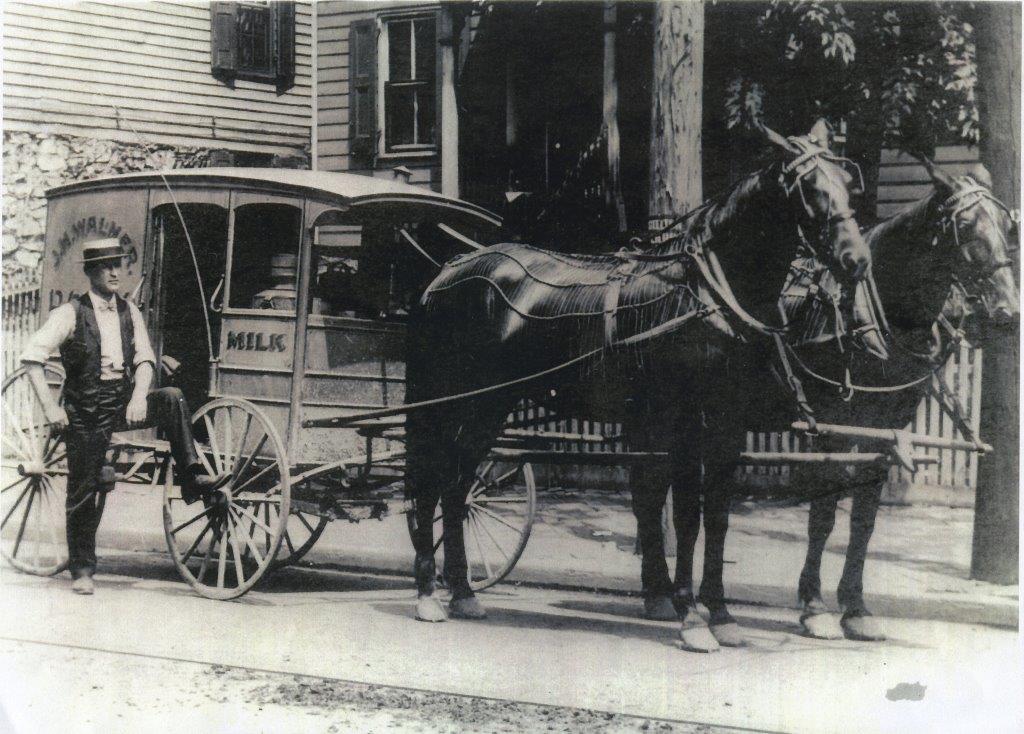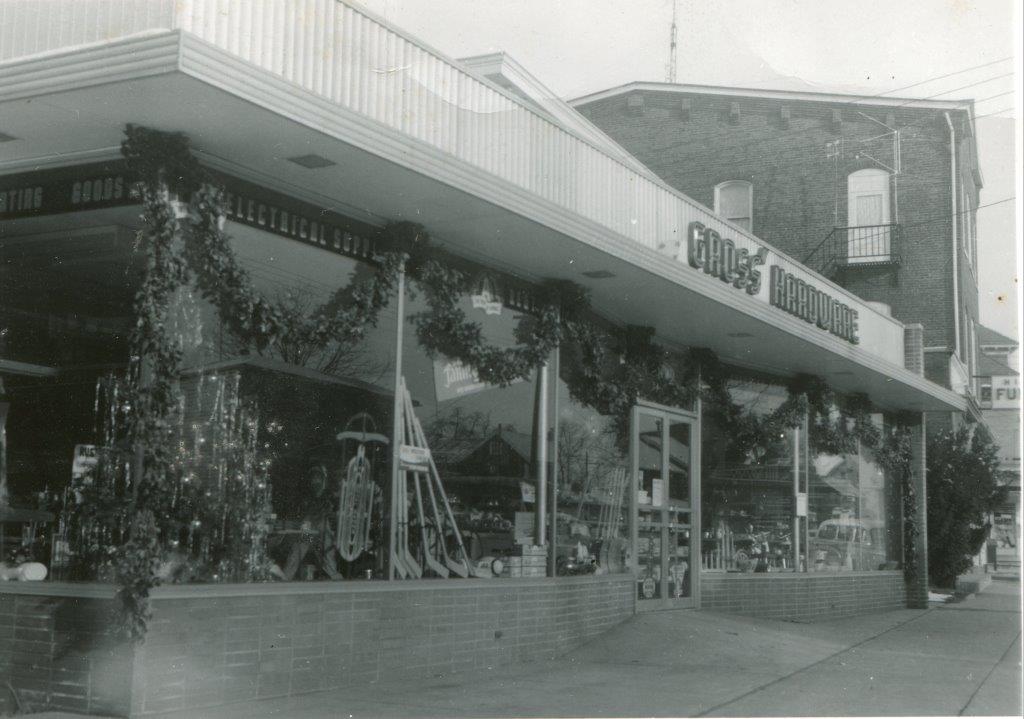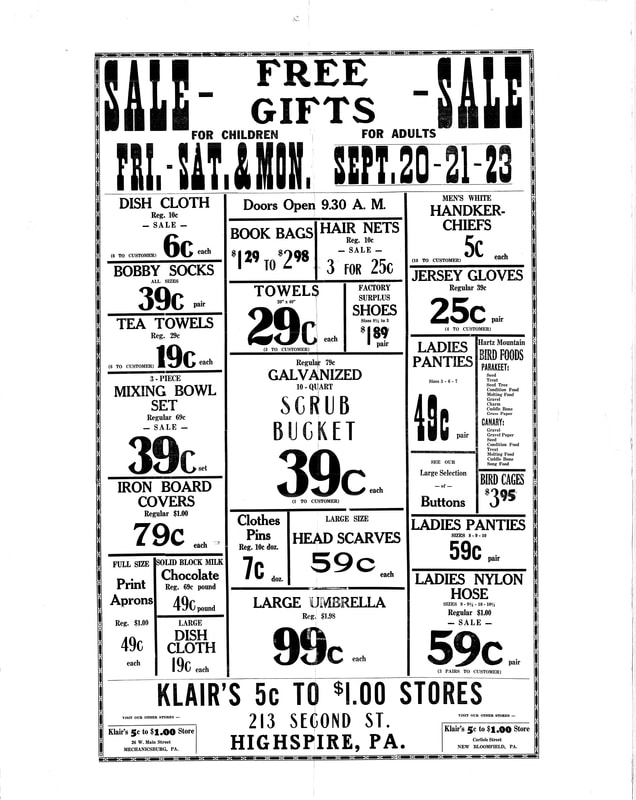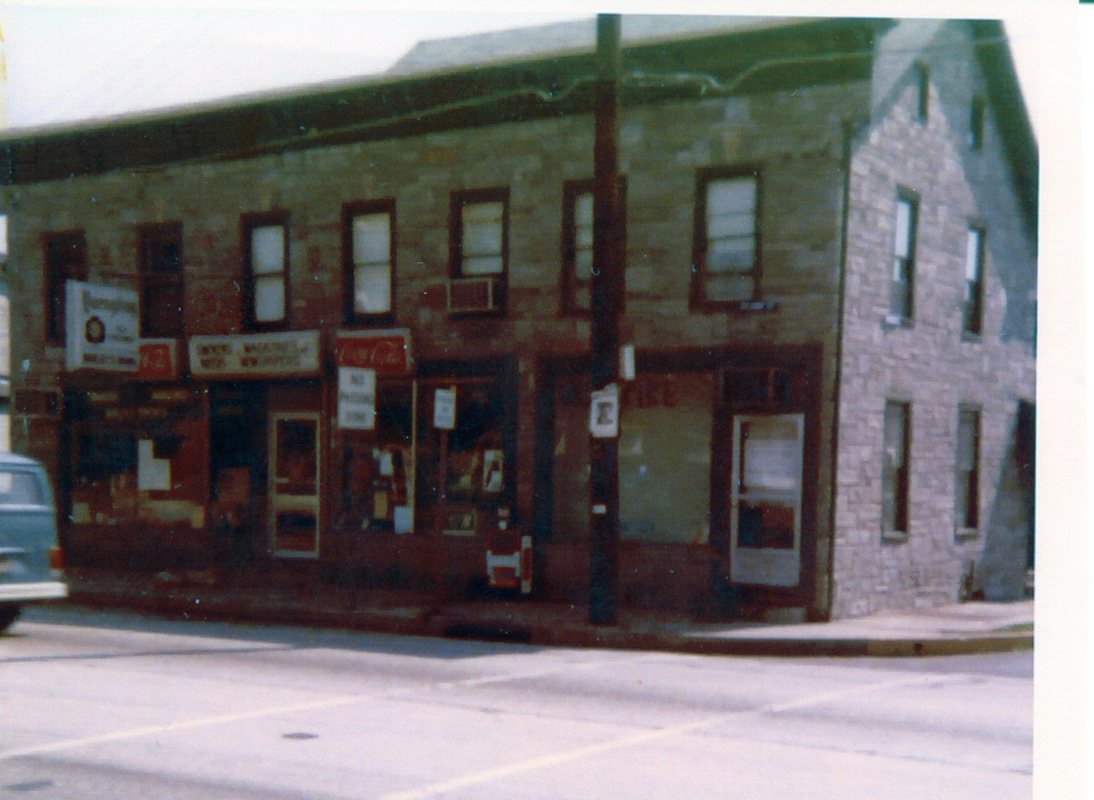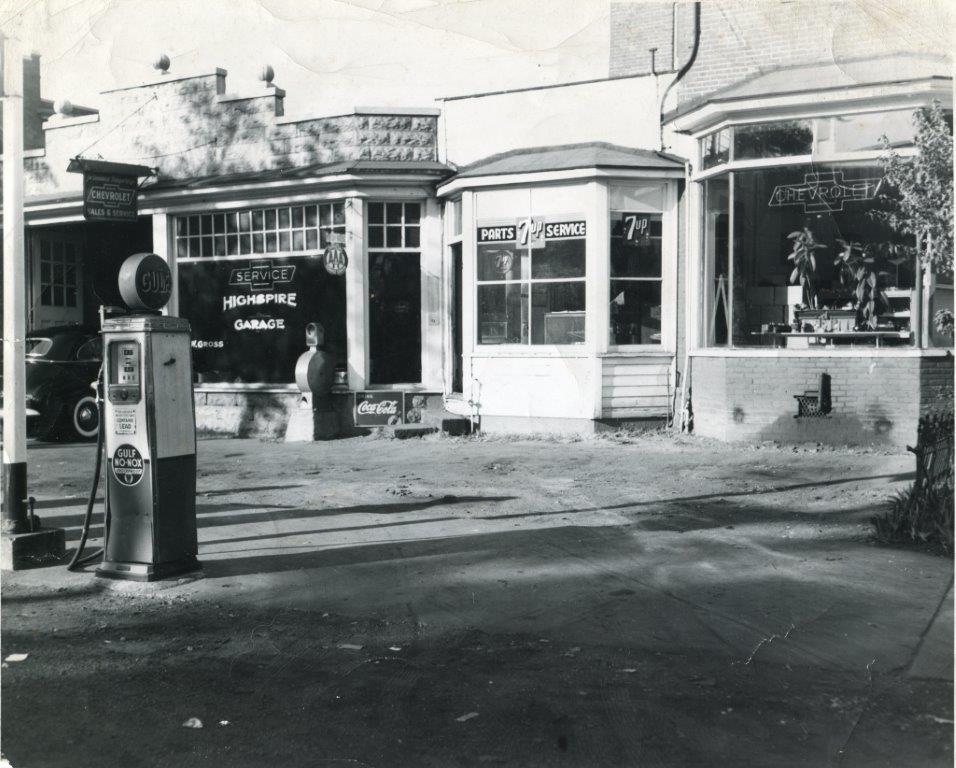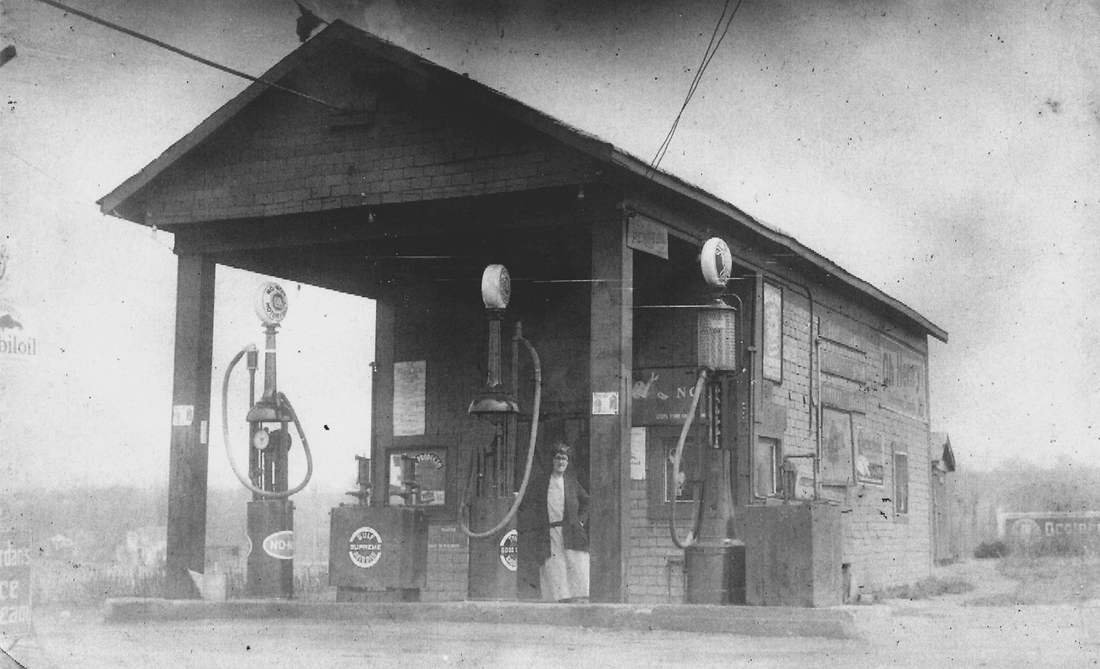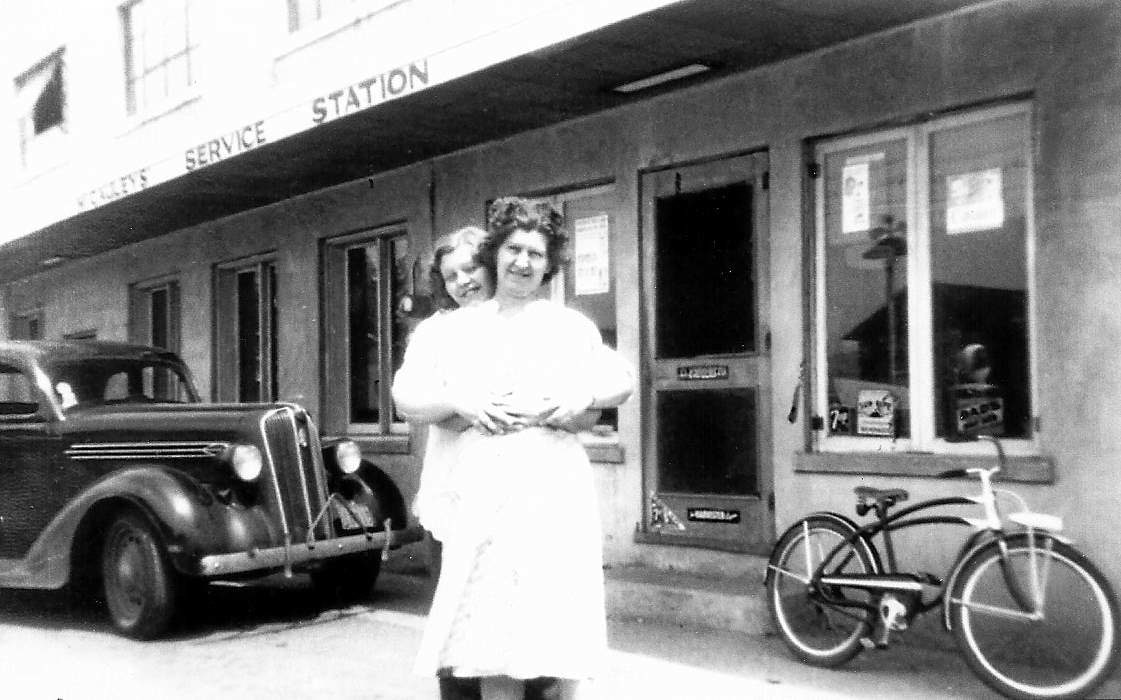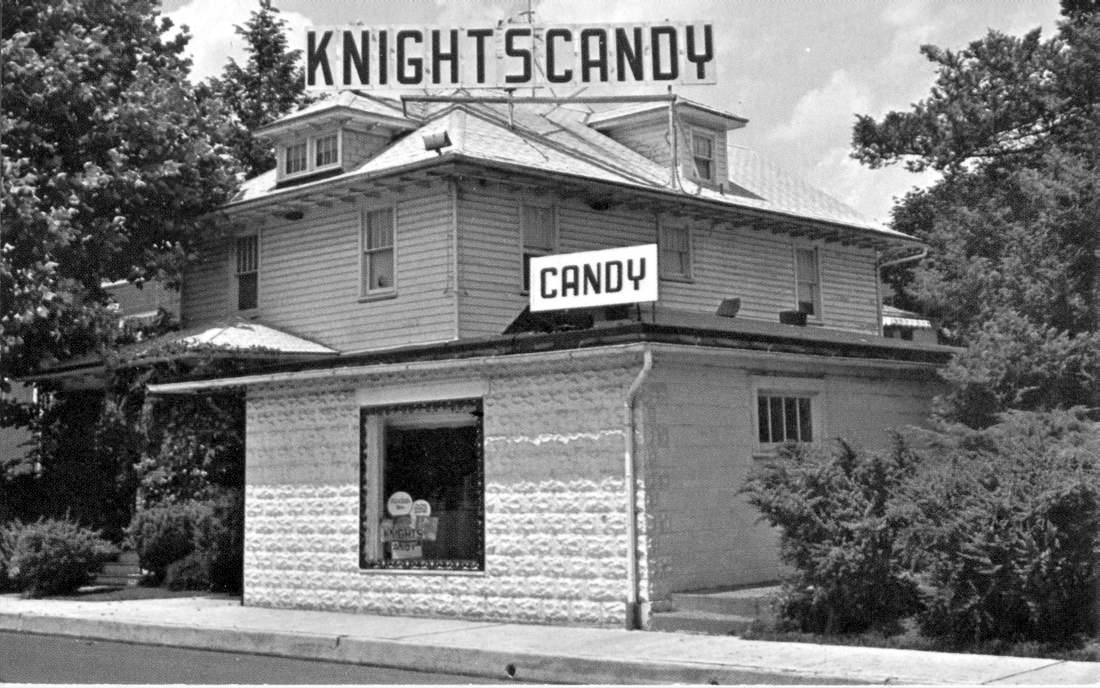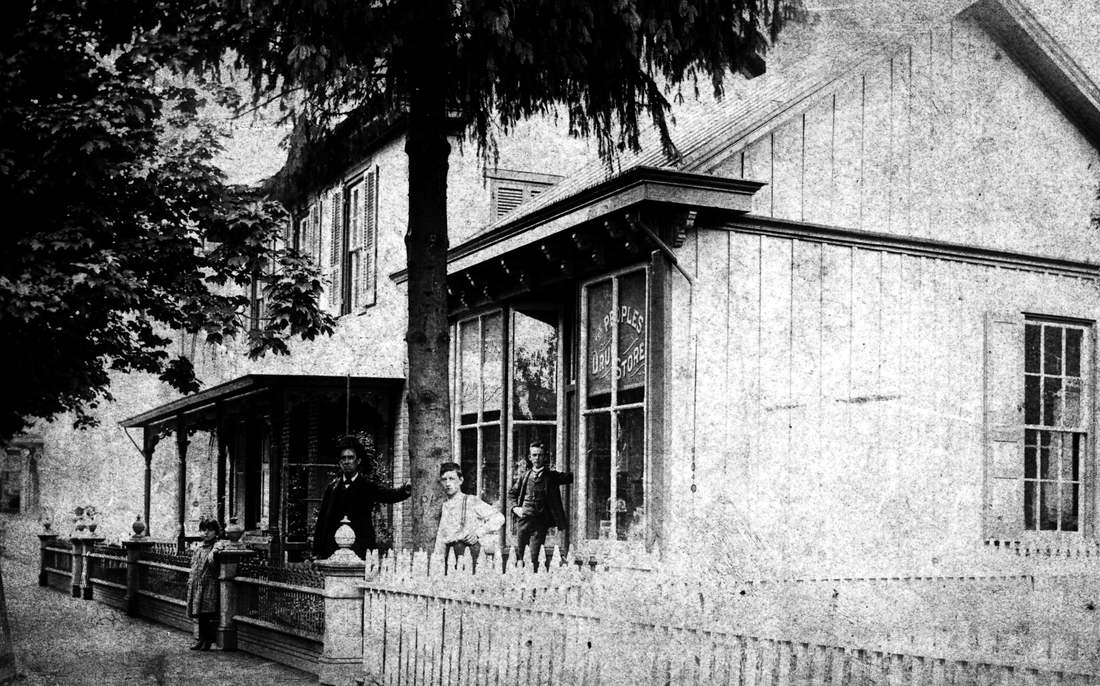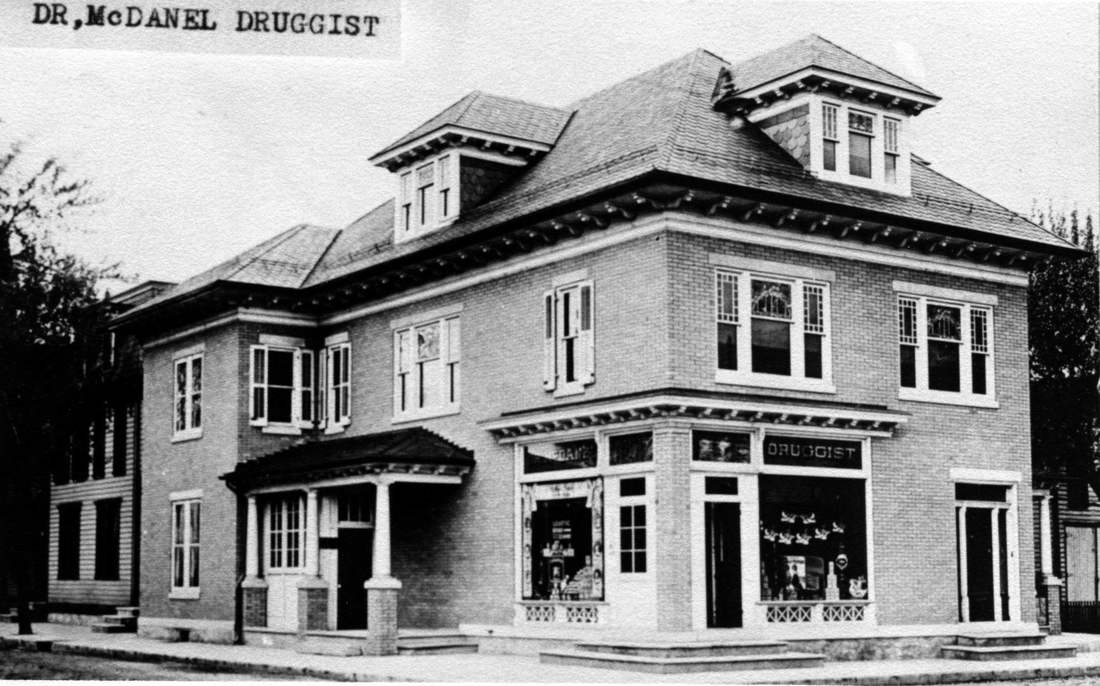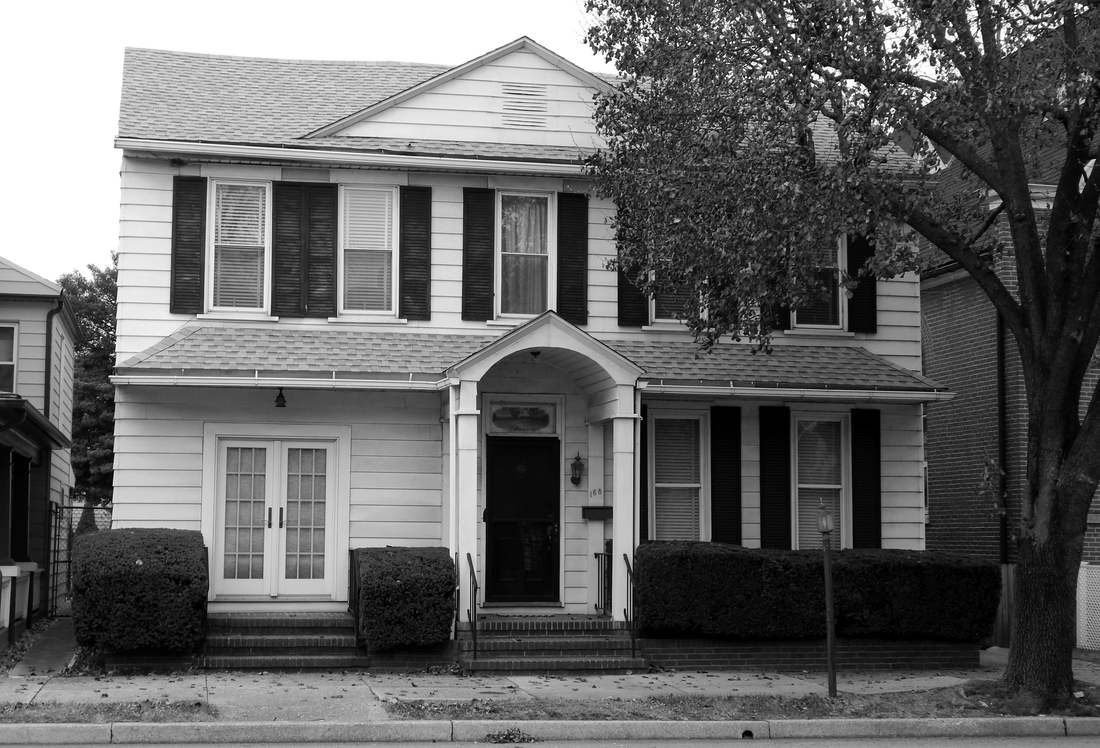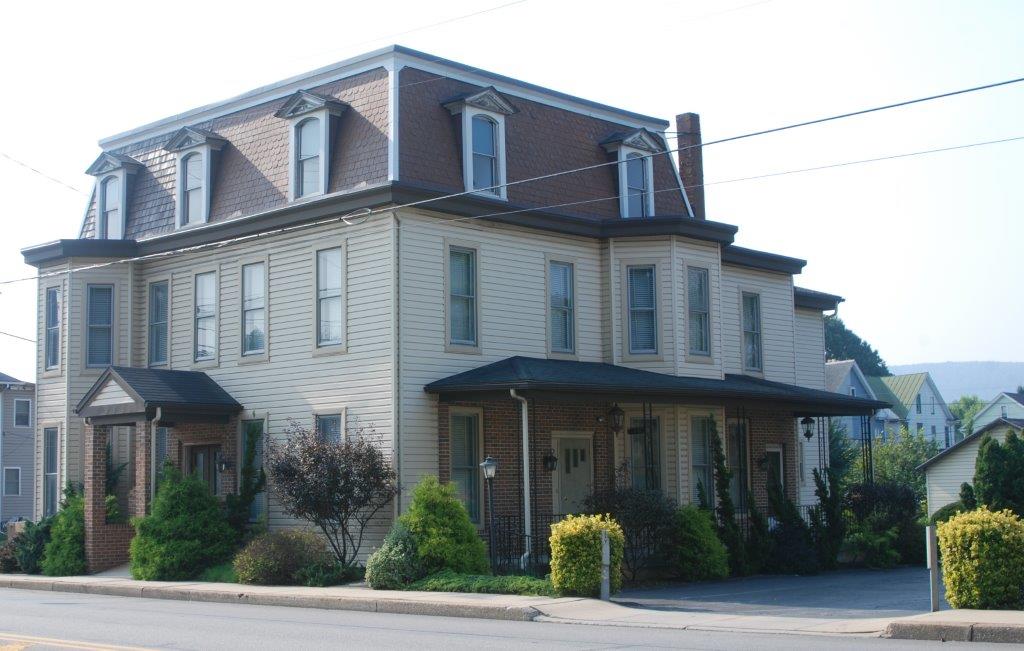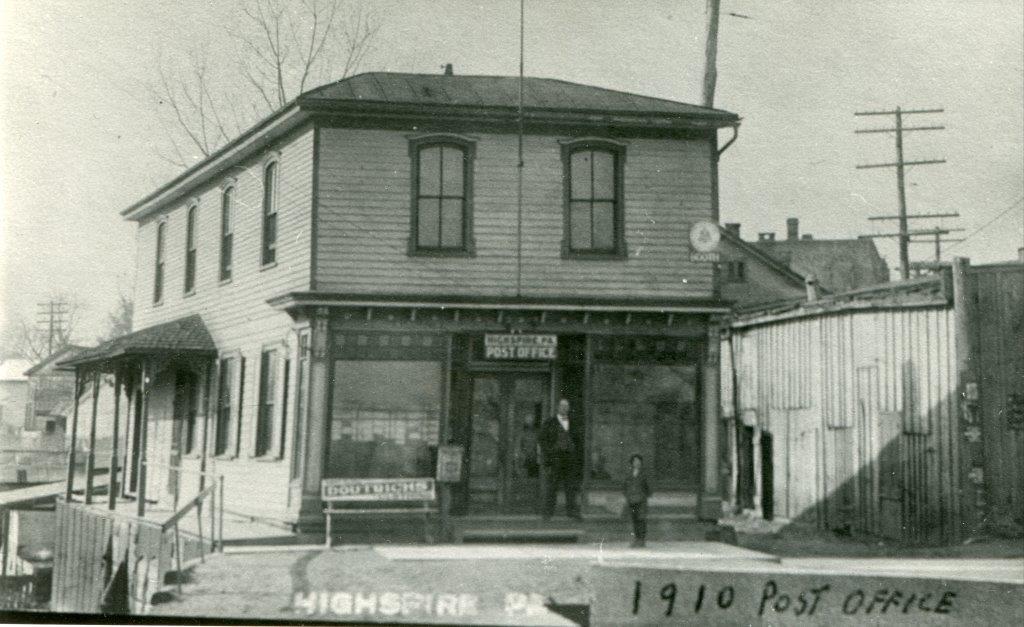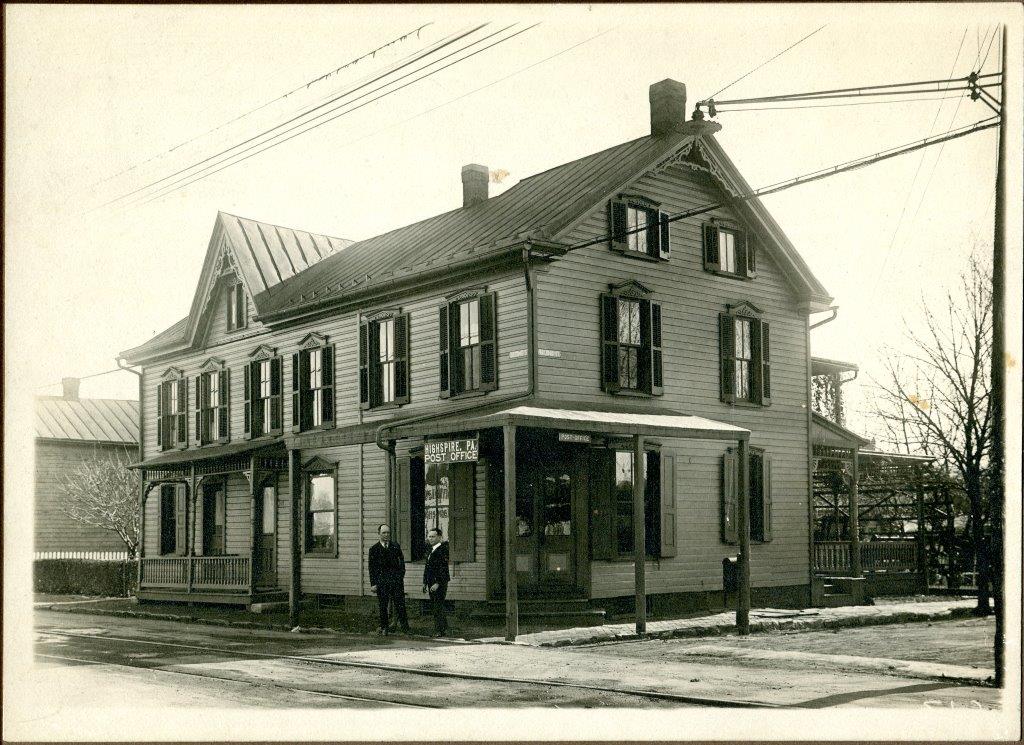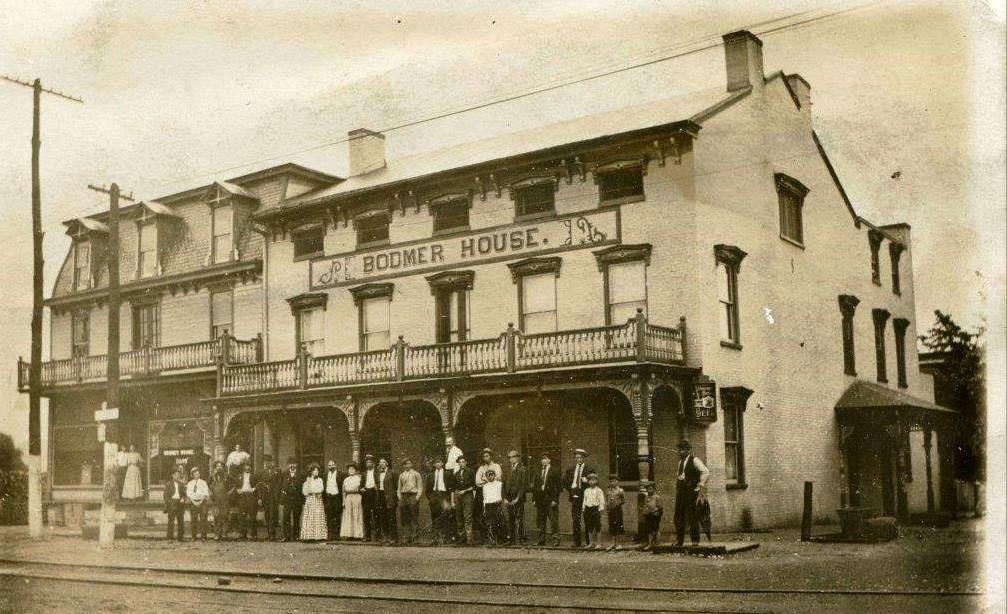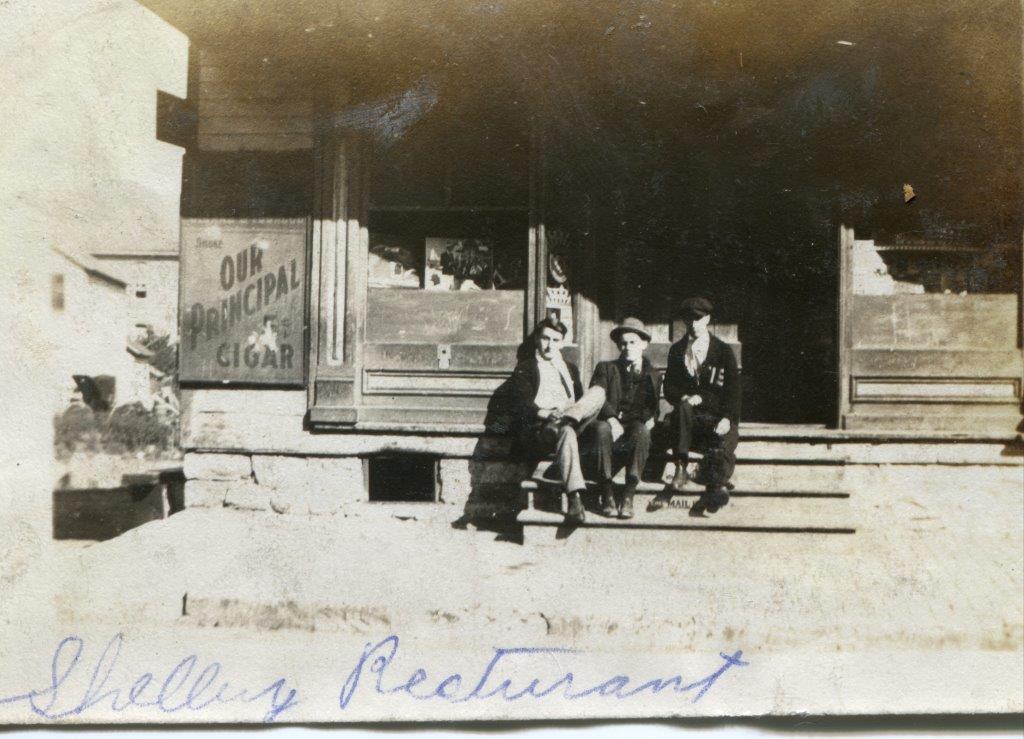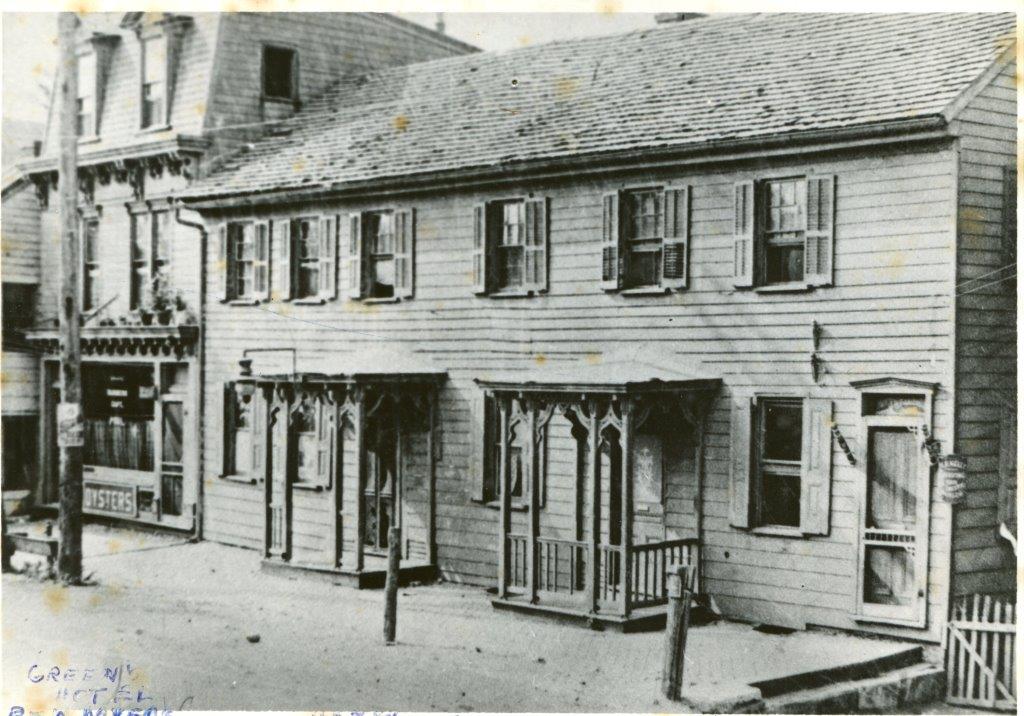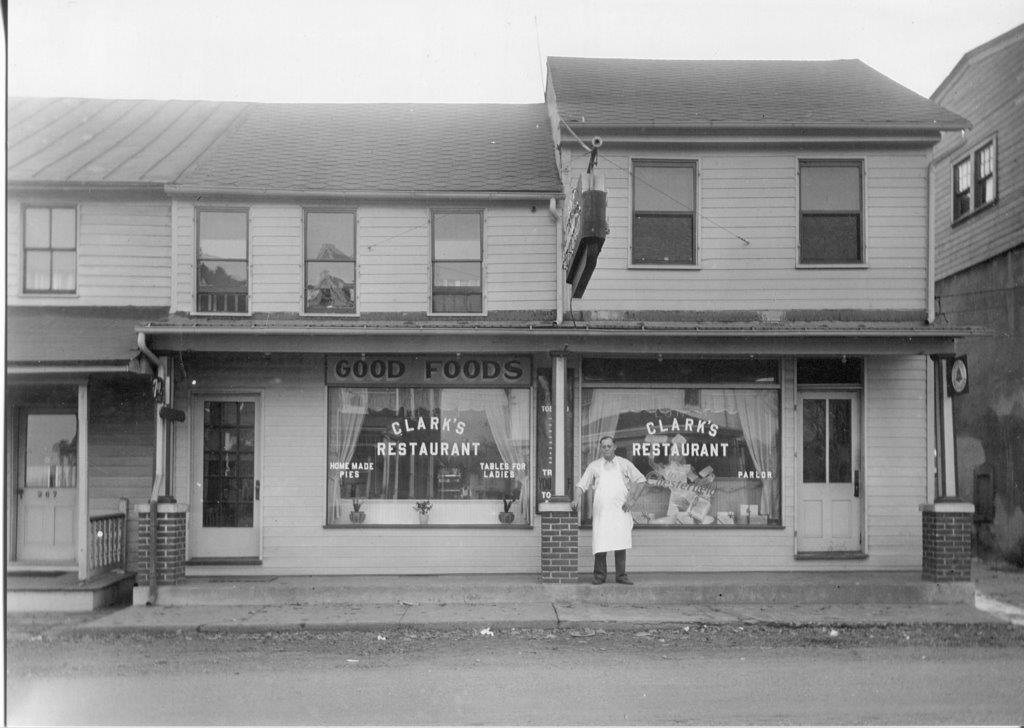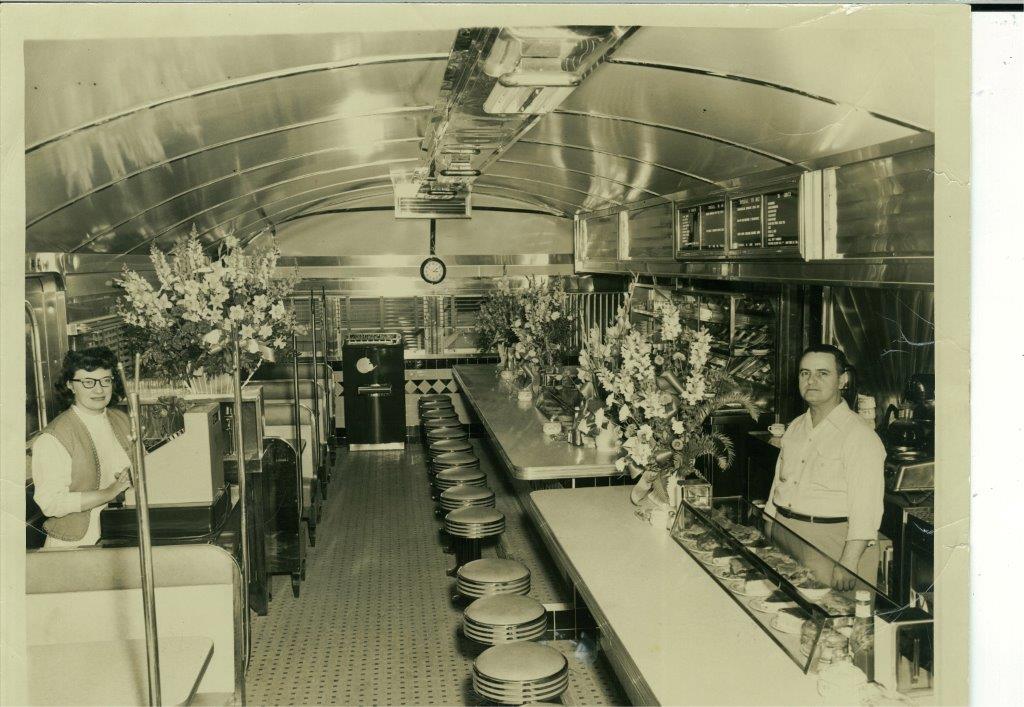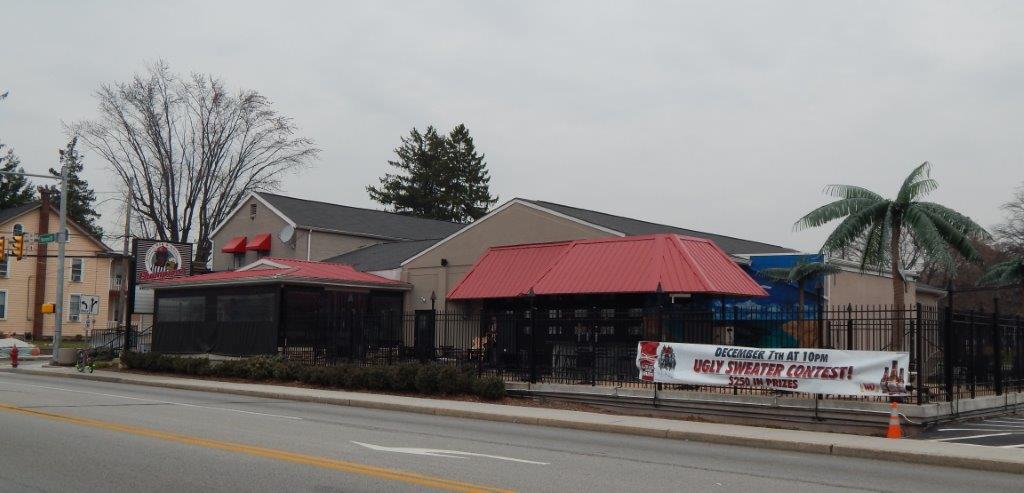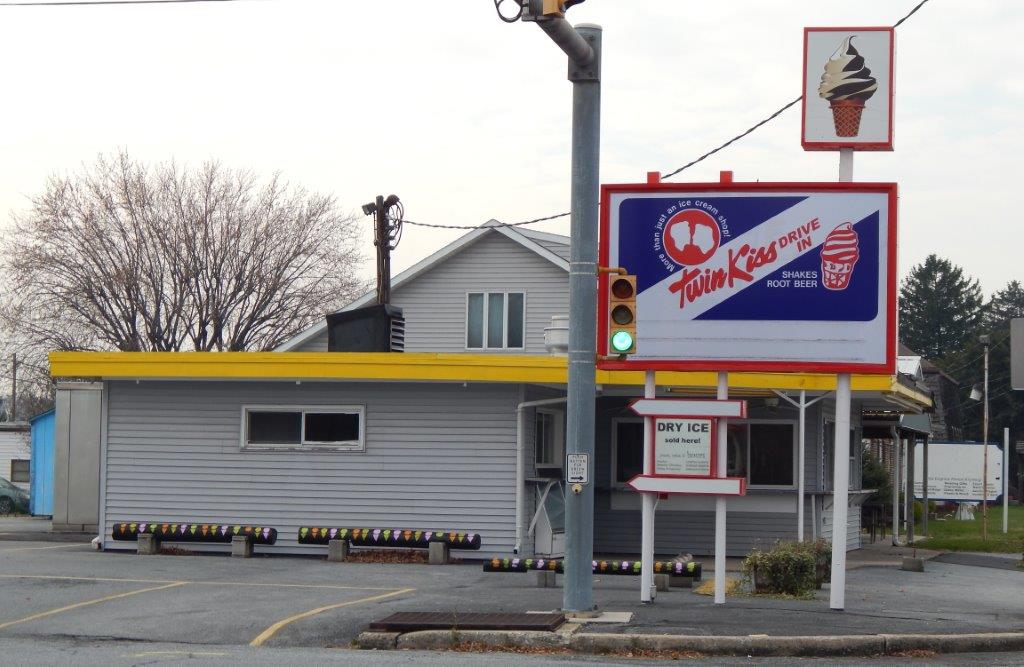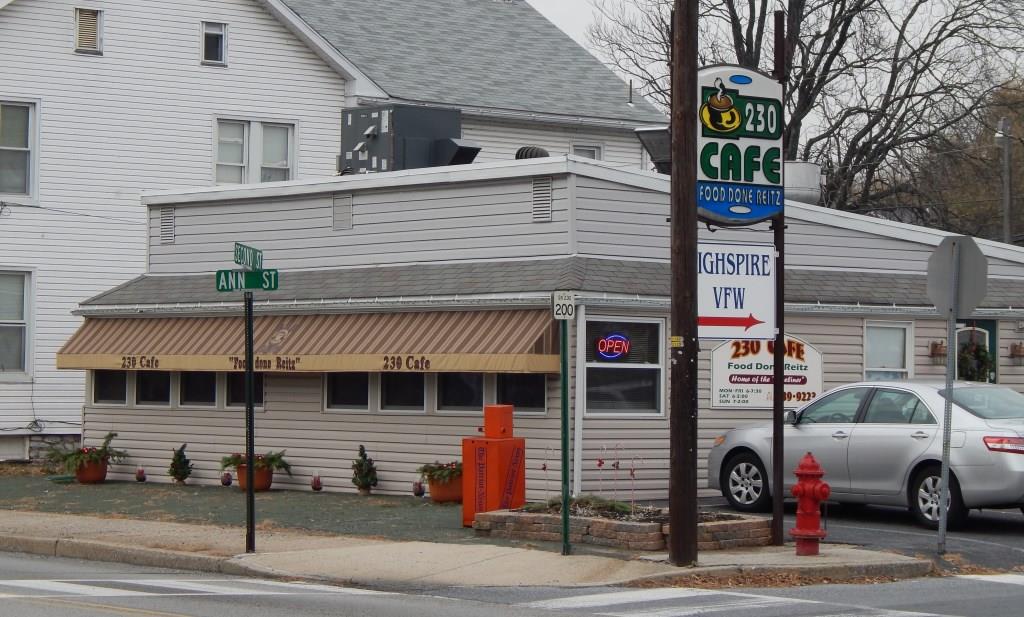Commerce
Volume 1 of Luther Reily Kelker’s 1907 History of Dauphin County, provides the best account we have of late 18th and early 19th Century Highspire businesses: “The first store was kept by a Mr. Leverich, who was succeeded by Conrad Alleman, who operated thirty-five years. John Scner came from Lancaster and kept the first tavern. The next inn was that of Mrs. Early, the ‘Cross-Keys.’ Afterwards Conrad Alleman kept a tavern in connection with Matthias Winagle. John Sener, about 1800 and later, made edge-tools for this whole region. The first blacksmith was Benjamin Ebersole, whose successor was Jacob Roop, who carried on the shop for forty years. During part of this time Jacob Wolf also had a shop at the other end of town. John Roop succeeded Wolf, and Daniel Long followed Jacob Roop. The first cooper was Benjamin Roop, whose successor was the late Abraham Funk.”
The 1850 Census identifies the occupations of Highspire residents. Most of the occupations would have involved sole proprietorships or small partnerships. Among the 291 persons counted were three innkeepers, six tailors, three distillers, two wagon makers, two saddlers, two merchants, one barber, seven shoemakers, six carpenters, six blacksmiths, two weavers, one mason, three clerks, one painter, one physician, two clergy, two coopers, one brick maker, one justice of the peace, one wheelwright, two boatmen and two millers.
The 1850 Census identifies the occupations of Highspire residents. Most of the occupations would have involved sole proprietorships or small partnerships. Among the 291 persons counted were three innkeepers, six tailors, three distillers, two wagon makers, two saddlers, two merchants, one barber, seven shoemakers, six carpenters, six blacksmiths, two weavers, one mason, three clerks, one painter, one physician, two clergy, two coopers, one brick maker, one justice of the peace, one wheelwright, two boatmen and two millers.
Stores
The Alleman Mansion was built by Conrad Alleman III early in the 19th century. This was across from the intersection of Paxton and Second Streets, where the Highspire Diner is today. According to Kelker (see above), he operated a dry goods store at this location for 35 years, the only one in town in the early 1800s. He also operated livery stables just to the west along Railroad Street, and another store at the corner of Second and Commerce Street, beside the Pennsylvania Canal. This picture was taken in 1948. The building was demolished in 1949 for widening of Route 230. The last owner was Nina Wensell, Conrad Alleman’s granddaughter.
Sometime before 1850, Henry Stoner opened a second store just to the west of Alleman's dry goods store on the northeast corner of the intersection of Second Street and the Pennsylvania Canal. The canal bridge can be seen just to the left of the Stoner residence and store. The Stoner store sat about where the bank is today. This illustration was drawn after 1875 because the school built in 1875 is visible in the background to the right of the Stoner store. The last occupant of the building was Shelley's Restaurant in the late 19th and early 20th Centuries.
One of the small Highspire stores at the turn of the 20th Century was that of Eli Ruth on the southeast corner of Second and Railroad Streets. This photo was taken in 1899. Mr. Ruth is in the bowler hat with his four youngest children on the right. He became Post Master in 1914 and converted the store front to a Post Office. It served in that capacity until 1944. After World War II, Army veteran Arthur E. Brienzo opened Chandu’s Barber Shop at that location. It served as a barber shop until the building was razed in 2008.
Charles Leidig operated one of the larger Highspire groceries in the early 20th century. His main store pictured above was located at 234 Second St., across from the intersection of Second and Railroad streets. He also had a store at Second Street and George Avenue in the east end of town managed by son Lester. At one time he owned a third store, across from the intersection
of Second and Commerce streets, where George Sides had earlier operated. That store was managed by Harvey Walmer, who later opened his own store at 128 Second St., between Race and Vine streets. In this photo Mr. Leidig is wearing the apron and his son Omar is on the left.
of Second and Commerce streets, where George Sides had earlier operated. That store was managed by Harvey Walmer, who later opened his own store at 128 Second St., between Race and Vine streets. In this photo Mr. Leidig is wearing the apron and his son Omar is on the left.
|
After Mr. Leidig's death in 1936, Kaylor and Hoover took over the main store location at 234 Second St. In the late 1940s they built a store on the corner of Hammaker and Eshleman St. John Higgins then operated Higgins Market at the 234 Second St. location from the late 1940s until about 1960 when he sold the store to the Handy Market chain.
|
In 1905, George E. Sides purchased a grocery store from Edward Stauffer. The store was on Second St. just across an alley to the east of the United Brethren Church (now United Methodist). This photo, circa 1915, shows George and his wife Blanch in their store. The buildind was razed in the late 20th Century; the location is now a parking lot for the United Methodist Church.
Three generations of the Hocker family owned and operated grocery and dry goods stores in Highspire for more than 100 years. In 1855 Jacob Hocker relocated his general store from Union Deposit to Highspire. His first location was along the canal on the southeast corner of Second and Commerce St., the store previously operated by Conrad Alleman. Sometime before 1873 he build a new store on the west side of the intersection of Second St. with the new Canal (now Roop) St.
Three generations of the Hocker family owned and operated grocery and dry goods stores in Highspire for more than 100 years. In 1855 Jacob Hocker relocated his general store from Union Deposit to Highspire. His first location was along the canal on the southeast corner of Second and Commerce St., the store previously operated by Conrad Alleman. Sometime before 1873 he build a new store on the west side of the intersection of Second St. with the new Canal (now Roop) St.
This cut from the 1873 Highspire Bird's Eye View drawing shows the location of Jacob Hocker's store on the west side of the intersection of Canal (Roop) and Second Streets. In 1884 Jacob sold his store to son Andrew Curtin “A.C.” Hocker. In 1899 A.C. Hocker sold the business, but not the property, to E.R. Mohler, who moved the business to 169 Second St.
After selling the business to E.R. Mohler, A.C Hocker razed the old store building and build a new three story brick building on corner of Second and Roop Streets. The first floor store front would be used as a grocery store until the 1950s. The last grocery store occupant was the American Store Co. as pictured in this photo. Since 1969 Snyder Printing has occupied this store front, 190 Second St., providing printing services for almost 50 years.
A.C.’s son Jacob C. “J.C.” Hocker also entered the grocery business. Prior to World War I, he had a store at 183 Second St. After serving in WWI, he married and lived in Philadelphia for a time before returning to Highspire and opening Hocker's Market at 13 Roop St. In 1958 the business passed to Richard "Dick" Chubb who built a loyal clientele with his fine meats and delicatessen items. Dick retired in 1995 and sold the business to Joe Cho. This is the oldest continuously operating retail business in Highspire.
Other Food Retailers
Until the 1950s, it was not uncommon to have food and other necessities brought to your door by the milk man, the bread man, the ice man, the butcher, the grocer, and seasonal fresh produce peddlers. The last mobile grocery to operate in Highspire was Tyrell Hendricks’ “Market at Your Door.” He sold groceries and fresh produce out of a green bus that he parked in the alley behind his house, beside the west end school playground. He also had a small produce stand in the alley.
Tyrell’s father, S.H. Hendricks, and brother, Clarence “Boob” Hendricks, also were in the produce business. They also sold fresh oysters, clams and fish. Albert Ehrhart sold fresh fruits and vegetables in Highspire in the late 1930s. In the last part of the 20th century, Pickles Fruit & Vegetable Stand was located at 7 Second St.; and in the 1970s, Landis’ Fresh Fruits & Vegetables was located at 248 Second St.
Butcher shops operated in Highspire well into the 20th century. In the 1870s, Ben Kauffman had one at 16 Vine St., the corner of Penn and Vine streets. In the early part of the 20th century, the C.A. Cover Meat Market in the 100 block of Lusk Avenue served the community with fresh and smoked meats. He also sold meat out of the back of a panel truck. (Photo below) Merlo Bonholtzer worked for Charles Cover and took over the butcher shop on Lusk Avenue after Cover retired. Merlo was noted for his smoked meats.
Tyrell’s father, S.H. Hendricks, and brother, Clarence “Boob” Hendricks, also were in the produce business. They also sold fresh oysters, clams and fish. Albert Ehrhart sold fresh fruits and vegetables in Highspire in the late 1930s. In the last part of the 20th century, Pickles Fruit & Vegetable Stand was located at 7 Second St.; and in the 1970s, Landis’ Fresh Fruits & Vegetables was located at 248 Second St.
Butcher shops operated in Highspire well into the 20th century. In the 1870s, Ben Kauffman had one at 16 Vine St., the corner of Penn and Vine streets. In the early part of the 20th century, the C.A. Cover Meat Market in the 100 block of Lusk Avenue served the community with fresh and smoked meats. He also sold meat out of the back of a panel truck. (Photo below) Merlo Bonholtzer worked for Charles Cover and took over the butcher shop on Lusk Avenue after Cover retired. Merlo was noted for his smoked meats.
Milton Sides partnered with John Keefer in operating a butcher shop on Second Street just west of Burd’s Run around the turn of the century, and then operated his own butcher shop and grocery on Wetzel Street in “Cowtown.” John Keefer’s son Paul carried on the family business at the Second Street location into the early 1970s. He sold meat from an old woodie panel truck in Highspire and neighboring communities.
One of the first businesses to operate in the east end of town was a dairy operation of John Walmer. He operated from a barn on Franklin Street, and peddled milk to customers in Highspire and surrounding communities from a horse-drawn wagon. He sold the business to Harrison Parthemore, who opened a dairy operation at 267 Market St., just east of Burd’s Run. The last proprietor to operate a store, but not a dairy operation, at that location was Edward “E.J.” Beard from the late 1950s to the late 1960s.
John Walmer Dairy Wagon
Hardware, Drygoods, Etc.
At the beginning of the 20th century, Hoff & Raymond had a hardware store on Second Street “just west of the Highspire Bridge.” In 1905, Harry Durborow opened a hardware store in the building that had been Dr. E.J. Putt’s office and pharmacy. (Pictured below)
Mr. Durborow operated there until 1936, when he sold the business to Robert Biemesderfer, who was the proprietor from 1936 to 1943, when Tolbert Gross purchased the store. In 1955, Gross’s sons Harry and Robert razed the old hardware store building, and expanded the building next door — which had housed their father’s automobile dealership — to create a new, much larger hardware store. The hardware store closed May 3, 1997, ending at least 100 years of hardware store operations in Highspire’s commercial center.
New Gross' Hardware, Built 1955
Several stores previously mentioned — e.g., Alleman, Hocker, Mohler, and Sides — were “general stores” carrying small household items, notions, sundries and non-clothing dry goods in the 19th and early 20th centuries. In the mid-20th century the largest store carrying non-grocery household items was Klair’s 5₵ to $1.00 Store, which occupied the building previously occupied by Ben Myer’s Restaurant and Green’s Hotel at 213 Second St. The business closed and the building was razed after the 1972 flood.
While Highspire had no ready-wear clothing stores, there were boot and shoe makers there back to the early 19th century. At least three generations of Poormans served Highspire as boot and shoe makers. In 1850, Harris Poorman was employed as a shoemaker. In 1873, S. Poorman had a boot and shoemaker shop at 168 Second St., beside the United Brethren Church. In the early 20th century, Edward Poorman had a shoemaker shop in the same location. In the 1920s Charlie Belmont had a retail shoe store and repair shop in the Bodmer House (Highspire Hotel) at the corner of Second and Lumber streets. After the 1936 flood, he moved his store to 188 Second St., on the left side storefront of the A.C. Hocker building. Bitting’s Shoe Store succeeded the Belmont store at this location in 1947. Hillary Bitting Sr. repaired shoes, and his wife Rachel ran the retail store. They supplied the Highspire basketball teams with “sneakers,” and sold a lot of work shoes to Bethlehem Steel employees.
In the early 20th century, Nina Wensell and sister Eulie Dugan, granddaughters of early Highspire merchant Conrad Alleman, had a millenary store in the old Alleman Mansion. The previously mentioned E.R. Mohler Store sold hats and “gents’ furnishing goods.”
In the 1920s, Elmer Duncan operated a news agency on Roop Street, across from present-day Chubb’s Market, selling newspapers, magazines, stationery, candy, tobacco and assorted novelties. In the 1930s, Duncan moved his store to the east corner of Second and Commerce streets. After the Duncan store closed, Harry Hoover and his son had a news agency and pool room in the east side of the same building. Around 1950, it was purchased by Elwood “Buss” Barley and was then operated as Barley’s News Agency. Before the days of the internet and television cable news, Highspire residents could get in-depth coverage of national and world events and financial news through major national newspapers and magazines available at Barley’s. Other products included personal care items, toys and plastic models, and there was a soda fountain and penny candy counter. Buss sold the business to brother Mel in 1963; it closed after the 1972 flood and the building was razed.
In the early 20th century, Nina Wensell and sister Eulie Dugan, granddaughters of early Highspire merchant Conrad Alleman, had a millenary store in the old Alleman Mansion. The previously mentioned E.R. Mohler Store sold hats and “gents’ furnishing goods.”
In the 1920s, Elmer Duncan operated a news agency on Roop Street, across from present-day Chubb’s Market, selling newspapers, magazines, stationery, candy, tobacco and assorted novelties. In the 1930s, Duncan moved his store to the east corner of Second and Commerce streets. After the Duncan store closed, Harry Hoover and his son had a news agency and pool room in the east side of the same building. Around 1950, it was purchased by Elwood “Buss” Barley and was then operated as Barley’s News Agency. Before the days of the internet and television cable news, Highspire residents could get in-depth coverage of national and world events and financial news through major national newspapers and magazines available at Barley’s. Other products included personal care items, toys and plastic models, and there was a soda fountain and penny candy counter. Buss sold the business to brother Mel in 1963; it closed after the 1972 flood and the building was razed.
Barley's News Agency circa 1960s
In the 1870s, before the era of mass production, there were two coopers in Highspire who made and repaired wood casks and tubs. R. Wilson was at the intersection of Railroad and Water streets, and S. Sweigle was on the north side of Penn Street, just west of Burd Run.
Before the age of the automobile, horsepower literally meant horses. In the 1870s, there were two blacksmiths and wagon makers in Highspire. Daniel Long had a shop on the southwest corner of Second and Railroad streets, and Jacob Roop had a shop two doors east of the corner of Second and Race streets. U.P. Banks had a saddlery on the west side of Commerce Street by the canal. Bicycles were often used for local transportation. The last specialty shop to sell and service bicycles in Highspire was that of Loyd Rife in the 1930s at 242 Penn St.
Before the age of the automobile, horsepower literally meant horses. In the 1870s, there were two blacksmiths and wagon makers in Highspire. Daniel Long had a shop on the southwest corner of Second and Railroad streets, and Jacob Roop had a shop two doors east of the corner of Second and Race streets. U.P. Banks had a saddlery on the west side of Commerce Street by the canal. Bicycles were often used for local transportation. The last specialty shop to sell and service bicycles in Highspire was that of Loyd Rife in the 1930s at 242 Penn St.
Automotive
The 20th century ushered in the automobile era, and automobile sales and service had a major impact on Highspire, as it did the entire nation. The first automobile dealership in Highspire was Tolbert Gross’ Highspire Garage at 186 Second St. In the 1920s, he sold Paige and Jewett models made by the Paige Automobile Manufacturing Co. In 1927, Graham Brothers bought Paige and changed the name of the name to Graham-Paige. Gross sold Graham-Paige until the mid-1930s, when he switched to Chevrolet. The dealership was sold in 1955 when Gross’s sons Harry and Robert opted to concentrate on the hardware business.
Highspire Garage 186 Second St., circa 1950
The first Ford dealer in Highspire was J.A. Plasterer & Son in the 500 block of Second Street. It sold Fords from the 1930s to the early 1950s, and built a show room at 576 Second St. in the late 1940s. In 1947, Earl Hoffman Sr. became a dealer for the new Kaiser-Frazer Corp. Kaiser-Frazer was created by industrialist Henry Kaiser and ex Graham-Paige President Joseph Frazer to take advantage of the demand for automobiles in the post WWII period. Earl Hoffman sold Kaiser-Frazer and Kaiser models until 1953, when Lee Iacocca, then a sales manager in Ford’s Philadelphia district, came to visit Earl and offered him a Ford dealership. Hoffman Ford quickly became a major dealership and easily the largest dealership ever in Highspire. Hoffman Ford operated at 427 Second St. until 1978. After being flooded twice in the early 1970s, Hoffman decided to relocate to the growing Colonial Park area. Hoffman Ford still operates at its Colonial Park location. Ron Pruitt opened a Ford dealership at the Hoffman location after the move, but it closed after about one year.
Hoffman Ford, 427 Second St.
Sales of gasoline and automobile repair services quickly became a major industry in the early 20th century. As previously mentioned, the Highspire Garage dated to the early 1920s. On the east end of town, Plasterer’s Square Deal Service Station at 570 Second St. also dates to the early 1920s. Just across the street from the Highspire Garage at 185 Second St., Harold Shireman opened an Esso gasoline station and sold De Soto and Plymouth automobiles in 1937. Just to the east was Kehres’ Atlantic Service at 189 Second St. Kehres’ Atlantic also sold tires, batteries and other accessories, as well as tobacco, soda and other convenience store items. The commercial center of Highspire was dominated by the automobile business by the late 1930s.
Plasterer's Square Deal Service Station, 570 Second St.
Mrs. James A. "Katie" Plasterer standing by the pump.
Mrs. James A. "Katie" Plasterer standing by the pump.
But there were still more automotive-related businesses in Highspire in the late 1930s. The Old Oaken Bucket Fleet Wing Service Station at 588 Second St. also sold tobacco, candy, drinks and snacks. Ray’s Super Service sold Pep gasoline and Tiolene Oil, and specialized in “first-class grease jobs.” The United Gas Station at 315 Second St. sold United Gasoline and offered 50-cent grease jobs and suspension spring spraying.
By the 1950s, there were service stations from one end of town to the other. There was an Amoco station at 56 Second St., just west of Eisenhower Boulevard; and a Gulf station at 80 Second, just to the east. Tom Kernan had an Esso station at the corner of Second and Paxton. In the late 1940s, Kenneth Solomon built a Cities Service station, later CITGO, on the northwest corner of Second and Poplar Alley. There was a Texaco Station at the corner of Second and Ligan, and a Gulf station at Second and White House Lane. Those businesses changed ownership frequently and occasionally changed brands. For example, the Esso station at Second and Paxton became an Atlantic station in the early 1960s.
By the 1950s, there were service stations from one end of town to the other. There was an Amoco station at 56 Second St., just west of Eisenhower Boulevard; and a Gulf station at 80 Second, just to the east. Tom Kernan had an Esso station at the corner of Second and Paxton. In the late 1940s, Kenneth Solomon built a Cities Service station, later CITGO, on the northwest corner of Second and Poplar Alley. There was a Texaco Station at the corner of Second and Ligan, and a Gulf station at Second and White House Lane. Those businesses changed ownership frequently and occasionally changed brands. For example, the Esso station at Second and Paxton became an Atlantic station in the early 1960s.
Frances "Chance" McCauley and daughter Beverly in front of McCauley's service station, May 1951.
Other Retail
Soon after the dawn of the automobile age, Lee deForest’s invention of the vacuum tube amplifier ushered in the age of electronics and commercial radio. Radio sales grew rapidly in the 1920s and 1930s. In the 1930s, Tolbert Gross’ Highspire Garage was selling and servicing Sparton brand radios. Plaster’s Garage was selling Arvin home and car radios. The 1940s saw the dawn of the television era and also stores exclusively selling and servicing electronic products. Austin Heicher sold and serviced RCA televisions and Hotpoint appliances at his store at 219 Second St. In the late 1950s, F&S Electronics also sold and serviced radios and televisions at 178 Second St. In the 1960s, Ralph “Shorty” Swartz operated a radio and television service shop at 421 Eshleman St. The development of solid-state electronics and integrated circuits caused the electronic service business to collapse almost as fast as it grew in the early 20th century.
While automobile dealers and service stations sold tires, there was only one specialty tire store in Highspire. Goss Tire of PA was located at 620 Second St. in the 1980s.
One long-time Highspire business closely tied to the automotive sector is Etnoyer’s RV World, previously known as Etnoyer’s Trailer Sales. It has been in business at 576 Second St. — in the showroom previously occupied by Plasterer’s Ford — since 1955, selling recreational vehicles as well as parts, accessories and service for all makes and models.
Other small retail businesses included Klock’s House of Music at 200 Second St., at the corner of Roop and Second streets. It opened in August 1961 and sold all musical instruments except pianos and organs. In 1981, Robert Klock retired and turned the business over to his son, who operated Jim’s Drum Shop at that location until 2000. His wife, Norma, also operated a Christian gift shop in the store. Laudermilch’s Highspire Garden Center on Muma Street sold flowers, plants and gift planters. Vozenilck’s Jewelry Store was first located at Second and Franklin streets in the 1940s and moved to 236 Second St., beside Higgin’s Grocery, around 1950. The business moved to Steelton in 1957. In the mid-1960s, a sporting goods store opened in the store front at 189 Second St. In the 1940s and early 1950s, a tombstone sales office was located on the northwest corner of Second and Ann streets. While not a storefront retail business, Elwood Rode served customers at many locations through his vending service.
Sale of home heating fuels has spawned local business throughout most of Highspire’s history. In the 1870s, Buser’s had a coal yard on the northeast corner of the Race or Mill Street bridge over the canal. At the turn of the 20th century, A.B. & J.W. Morrow had a coal dealership in Highspire. Kohen and A.J. Hoke sold ice, coal and wood in the 1910s and ’20s. In the early and mid-20th century, Middletown Ice and Coal had a coal yard on the south side of Front Street, at the intersection with Wilson Alley. In the 1930s, Tyrell Hendricks delivered coal. In the mid-20th century, Robert Grunden, at Lumber and Poplar streets, delivered anthracite coal to customers in Highspire and surrounding areas. In the mid-20th century, Aero Oil Co. and Joseph Sauder operated heating oil delivery businesses in Highspire.
Refrigeration has always been necessary to keep food fresh. Before the days when electric-powered refrigerators were common, a regular supply of ice was a necessity to keep the “ice box” cool. In the 19th century, Benjamin Kauffman cut ice out of the canal and stored it in a building at Lumber and Penn streets. The last “ice man” to serve Highspire was ice and coal dealer Gerald Shaffner, who delivered to homes into the 1950s, and to restaurants at least into the late 1960s.
Possibly no small Highspire business was more widely known than Knight’s Candy. Fred Knight relocated his business from Steelton to Highspire around 1935, with the candy store located in the front of his house at 222 Broad St. He manufactured candy at that location and was noted for large chocolate figurines and special holiday chocolate treats. He planted signs that said “XXX miles to Famous Knight’s Candy” wherever he traveled. Customers would come to Highspire from far beyond the local area. Fred, Jr. managed the store after his father’s death. It closed Feb. 14, 1980.
While automobile dealers and service stations sold tires, there was only one specialty tire store in Highspire. Goss Tire of PA was located at 620 Second St. in the 1980s.
One long-time Highspire business closely tied to the automotive sector is Etnoyer’s RV World, previously known as Etnoyer’s Trailer Sales. It has been in business at 576 Second St. — in the showroom previously occupied by Plasterer’s Ford — since 1955, selling recreational vehicles as well as parts, accessories and service for all makes and models.
Other small retail businesses included Klock’s House of Music at 200 Second St., at the corner of Roop and Second streets. It opened in August 1961 and sold all musical instruments except pianos and organs. In 1981, Robert Klock retired and turned the business over to his son, who operated Jim’s Drum Shop at that location until 2000. His wife, Norma, also operated a Christian gift shop in the store. Laudermilch’s Highspire Garden Center on Muma Street sold flowers, plants and gift planters. Vozenilck’s Jewelry Store was first located at Second and Franklin streets in the 1940s and moved to 236 Second St., beside Higgin’s Grocery, around 1950. The business moved to Steelton in 1957. In the mid-1960s, a sporting goods store opened in the store front at 189 Second St. In the 1940s and early 1950s, a tombstone sales office was located on the northwest corner of Second and Ann streets. While not a storefront retail business, Elwood Rode served customers at many locations through his vending service.
Sale of home heating fuels has spawned local business throughout most of Highspire’s history. In the 1870s, Buser’s had a coal yard on the northeast corner of the Race or Mill Street bridge over the canal. At the turn of the 20th century, A.B. & J.W. Morrow had a coal dealership in Highspire. Kohen and A.J. Hoke sold ice, coal and wood in the 1910s and ’20s. In the early and mid-20th century, Middletown Ice and Coal had a coal yard on the south side of Front Street, at the intersection with Wilson Alley. In the 1930s, Tyrell Hendricks delivered coal. In the mid-20th century, Robert Grunden, at Lumber and Poplar streets, delivered anthracite coal to customers in Highspire and surrounding areas. In the mid-20th century, Aero Oil Co. and Joseph Sauder operated heating oil delivery businesses in Highspire.
Refrigeration has always been necessary to keep food fresh. Before the days when electric-powered refrigerators were common, a regular supply of ice was a necessity to keep the “ice box” cool. In the 19th century, Benjamin Kauffman cut ice out of the canal and stored it in a building at Lumber and Penn streets. The last “ice man” to serve Highspire was ice and coal dealer Gerald Shaffner, who delivered to homes into the 1950s, and to restaurants at least into the late 1960s.
Possibly no small Highspire business was more widely known than Knight’s Candy. Fred Knight relocated his business from Steelton to Highspire around 1935, with the candy store located in the front of his house at 222 Broad St. He manufactured candy at that location and was noted for large chocolate figurines and special holiday chocolate treats. He planted signs that said “XXX miles to Famous Knight’s Candy” wherever he traveled. Customers would come to Highspire from far beyond the local area. Fred, Jr. managed the store after his father’s death. It closed Feb. 14, 1980.
Knight's Candy, 222 Broad St.
For more than 100 years, Highspire had a pharmacy in its commercial center. In the 19th century, it was common for physicians to sell drugs in addition to treating patients. Dr. Edward Putt practiced medicine and operated a retail drug outlet from at least 1850 until late in the century. His pharmacy was just west of the bridge in the building that would later serve as a hardware store for 50 years.
Dr. Edward Putt's Office and Pharmacy.
This is the same building as the Durborow Hardware pictured above.
This is the same building as the Durborow Hardware pictured above.
By the turn of the 20th century, Dr. McDanel had a practice at the east corner of Canal (Roop) and Second streets. In the second decade of the century, Dr. McDanel built a fine brick building on that corner to house his office and drug store. After his death in 1927, Phil Shoemaker purchased the building and business and operated a drug store in that location until his death in 1953, when Al and Sonia Achenbach took over operation of the drug store. In 1958, they moved the business across the street to 205 Second St., on the east corner of Wilson Alley. The new building allowed a larger inventory of over-the-counter medications, personal care and household items. Achenbach’s Pharmacy closed in June 1983.
Dr. McDanel's Office and Pharmacy, 200 Second St.
Services
Dr. Edward Putt was the first physician we have a record of in Highspire. He is listed in the 1850 Census and on the Highspire map in the 1875 Dauphin County Atlas. He died in 1889. At the turn of the 20th century, two physicians were practicing in Highspire: Dr. W.B. Kirkpatrick, physician and surgeon, was located in Dr. Putt’s old office (see photo above); and Dr. Harry S. McDanel was located at the corner of Second and Canal (Roop) streets. Dr. McDanel practiced in Highspire from April 1894 until his death in August 1927. Dr. McDanel was also active in business, he was one of the founders of the Highspire State Bank, and served as it's Vice-President until his death.
In 1923, Dr. William J. Albright started practicing in Highspire. In 1928 he purchased the home of Edward and Dolly Poorman at 168 Second St. and established his office there. He practiced in that location until his death in 1950 at the age of 52.
In 1923, Dr. William J. Albright started practicing in Highspire. In 1928 he purchased the home of Edward and Dolly Poorman at 168 Second St. and established his office there. He practiced in that location until his death in 1950 at the age of 52.
Residence and office Dr. William J. Albright, 1928-1950
The entrance to the waiting room was the double door to the left.
The entrance to the waiting room was the double door to the left.
Dr. Albright's son, William J. Albright III, followed his father into the medical field, and upon completion of his residency practiced in his father’s old office on Second Street. He soon built a larger office at 225 Broad St., on the corner of Broad and Paxton, where he partnered with Dr. Donald Crawford until 1972. William J. Albright IV also followed his father into the medical field and practiced with him in Highspire starting in 1986. The three generations of Albright physicians have served the residents of Highspire for 95 years and counting.
About a year before Dr. Albright’s death in 1950, Dr. James Green started a practice at 599 Second St., the southwest corner of Second and Ligan streets. Since he was the only physician in Highspire after Dr. Albright’s death, the United States Selective Service delayed his draft during the Korean War. Dr. Green served as a team doctor for many of the school sports teams in the 1950s. In 1960, he accepted a position with the Dunham Army Medical Center at Carlisle Barracks and moved to Carlisle.
Another Highspire native who practiced in his hometown is Dr. Larry Espenshade. He was a primary care physician for 39 years, with an office on the west end of Highspire. His practice at 40 Second St. became affiliated with the Pinnacle Health Heritage Family Health of Highspire. On Nov. 22, 2013, Dr. Espenshade announced his retirement effective Feb. 28, 2014, and the closure of Heritage Family Health of Highspire at that time.
Dr. Harold Ebersole practiced dentistry in Highspire for several decades starting in the 1960s, first in an office on the corner of Second and Franklin streets, and later at 209 Second St., beside Achenbach’s Drug Store in a building that had been the home of Orville Green, proprietor of Green’s Hotel.
At the turn of the 20th century, two tonsorial artists (barbers) were practicing in Highspire: Clarence Beidel and L.H. Harley. Harley’s shop was in the Bodmer House (Highspire Hotel). Around that same time, Hazel Kelley had a barber shop on Second Street in the west-side storefront of the Green’s Hotel building. In the 1920s, M.B. Kelley was operating a barber shop at that location. Irvin Beard and Elwood Diffenderfer had a barber shop at the corner of Second and Vine. Irvin had his shop there for many years. After WWII, Arthur E. Brienzo opened Chandu’s Barber Shop at the corner of Second and Railroad streets. Chandu was a colorful character, known by many as “The Mad Russian.” He operated his shop there for many years. When Chandu retired, Pete Intrieri took over the shop. The last barber to practice there before the building was condemned for structural problems was Thomas Michel.
In the late 1930s, there were at least two beauty shops in Highspire: Knepp’s Beauty Shop at 183 Second St., on the east corner of Commerce and Second streets; and Mary Householder’s Mar’e Beaut’e Salon at 57 Roop St. The Benko sisters succeeded Knepp in the shop at Second and Commerce. In the 1950s and ’60s, Columba’s Beauty Shop was in at that location. In the 1980s, Janet’s Hair Styling salon was at 307 Second St. At the turn of the 21st century, Holly’s Hair shop was at 188 Second St.
Highspire had its own movie theater in the early 20th century. Jeremiah Daugherty showed silent films in what was known as the “Band Hall” on the norteast corner of Lusk and Commerce streets. The building was razed in the 1930s.
The automobile age brought a need for specialized repair services. George Dintiman started an auto body repair shop about 1939. Dintiman’s Body Shop was in business at 629 Second St. for 60 years, closing in 1999.
For most of the later 20th century, Austin Heicher provided notary public service at 219 Second St. Dorothy Matesevic has been offering custom draperies and window treatments at 53 Paxton St. since the 1980s. In the 1970s, Fritz’s Sharp Shop provided tool sharpening services at 77 Lumber St.
At the turn of the 20th century, Irvin Ruth had a painting and wallpaper-hanging business in Highspire. In the 1920s and ’30s, J.E. Gerhart was in the wall paper and paperhanging business at 263 Market St. In 1932, Merle Hess went into the paperhanging and painting business. He continued this business in Highspire for 55 years, retiring in 1987. From 1970 until 2012, Albert Otzel had a painting and paperhanging business. From the late 1980s to mid-1990s he also operated the Highspire Home Decorating Center at 203 Second St.
In the 1930s, R. Wanbaugh was an electrical contractor, and sold and serviced Kelvinator appliances at 446 Second St. In the 1950s and 1960s, Ira Conners had Conner’s Electrical Contractor at 268 Broad St., and Austin Heicher operated an electrical contracting service out of his television and appliance store at 219 Second St. In the 1970s, Espenshade’s Electrical Service and Carvell Electrical Service were located in Highspire. Carvell continues to operate from its office at 193 Market St.
While the building boom in Highspire was in the late 19th and early 20th centuries, we have no record of full-time contractors operating in the borough during that period. Highspire contractors in the later part of the 20th century included Truman E. Horner, with an office at 297 Market St.; E.C. Snyder, 612 Eshleman St.; Donald “Pepper” Petrovic, 215 Lumber St.; John’s Homes, 431 Second St.; and Fine Line Homes, 182 Second St. Fred Gibson at 590 Eshleman St. had a concrete construction business. Drafting services were offered by Roger Williamson at 508 Second St. In the 1970s, R&R Associates had a survey and engineering office at 503 Second St.
Implementation of potable water supplies and sewer systems in the early 20th century brought a need for people to install and maintain those systems. One of the oldest continuously operating businesses in Highspire is a plumbing and heating business started by Richard Buffington in 1952. His son joined and eventually succeeded him, and now the WM Buffington Co. provides heating and cooling system installation and maintenance in Central Pennsylvania and throughout the Mid-Atlantic region, with a warehouse on Lusk Avenue in Highspire.
In the late 20th century, several self-service laundries were located in Highspire. McCauley’s installed coin-operated laundry equipment where its auto repair garage had been in 1958, it was known as the Duplex Coin Operated Laundry. A new Laundromat was built at the corner of Ann and Willow streets in the late 1950s. A new laundromat, Boardwalk Laundromat, opened at 255 Broad St., Dr. Albright's old office, in 2018.
Until 1950, there was no funeral home in Highspire. In that year Kenneth M. Knight opened K. M. Knight Funeral Home at 31 Second St. Ken died in 1977. The current owner, D. Duke Cuckovic Jr., has been the funeral director there since Knight’s death.
About a year before Dr. Albright’s death in 1950, Dr. James Green started a practice at 599 Second St., the southwest corner of Second and Ligan streets. Since he was the only physician in Highspire after Dr. Albright’s death, the United States Selective Service delayed his draft during the Korean War. Dr. Green served as a team doctor for many of the school sports teams in the 1950s. In 1960, he accepted a position with the Dunham Army Medical Center at Carlisle Barracks and moved to Carlisle.
Another Highspire native who practiced in his hometown is Dr. Larry Espenshade. He was a primary care physician for 39 years, with an office on the west end of Highspire. His practice at 40 Second St. became affiliated with the Pinnacle Health Heritage Family Health of Highspire. On Nov. 22, 2013, Dr. Espenshade announced his retirement effective Feb. 28, 2014, and the closure of Heritage Family Health of Highspire at that time.
Dr. Harold Ebersole practiced dentistry in Highspire for several decades starting in the 1960s, first in an office on the corner of Second and Franklin streets, and later at 209 Second St., beside Achenbach’s Drug Store in a building that had been the home of Orville Green, proprietor of Green’s Hotel.
At the turn of the 20th century, two tonsorial artists (barbers) were practicing in Highspire: Clarence Beidel and L.H. Harley. Harley’s shop was in the Bodmer House (Highspire Hotel). Around that same time, Hazel Kelley had a barber shop on Second Street in the west-side storefront of the Green’s Hotel building. In the 1920s, M.B. Kelley was operating a barber shop at that location. Irvin Beard and Elwood Diffenderfer had a barber shop at the corner of Second and Vine. Irvin had his shop there for many years. After WWII, Arthur E. Brienzo opened Chandu’s Barber Shop at the corner of Second and Railroad streets. Chandu was a colorful character, known by many as “The Mad Russian.” He operated his shop there for many years. When Chandu retired, Pete Intrieri took over the shop. The last barber to practice there before the building was condemned for structural problems was Thomas Michel.
In the late 1930s, there were at least two beauty shops in Highspire: Knepp’s Beauty Shop at 183 Second St., on the east corner of Commerce and Second streets; and Mary Householder’s Mar’e Beaut’e Salon at 57 Roop St. The Benko sisters succeeded Knepp in the shop at Second and Commerce. In the 1950s and ’60s, Columba’s Beauty Shop was in at that location. In the 1980s, Janet’s Hair Styling salon was at 307 Second St. At the turn of the 21st century, Holly’s Hair shop was at 188 Second St.
Highspire had its own movie theater in the early 20th century. Jeremiah Daugherty showed silent films in what was known as the “Band Hall” on the norteast corner of Lusk and Commerce streets. The building was razed in the 1930s.
The automobile age brought a need for specialized repair services. George Dintiman started an auto body repair shop about 1939. Dintiman’s Body Shop was in business at 629 Second St. for 60 years, closing in 1999.
For most of the later 20th century, Austin Heicher provided notary public service at 219 Second St. Dorothy Matesevic has been offering custom draperies and window treatments at 53 Paxton St. since the 1980s. In the 1970s, Fritz’s Sharp Shop provided tool sharpening services at 77 Lumber St.
At the turn of the 20th century, Irvin Ruth had a painting and wallpaper-hanging business in Highspire. In the 1920s and ’30s, J.E. Gerhart was in the wall paper and paperhanging business at 263 Market St. In 1932, Merle Hess went into the paperhanging and painting business. He continued this business in Highspire for 55 years, retiring in 1987. From 1970 until 2012, Albert Otzel had a painting and paperhanging business. From the late 1980s to mid-1990s he also operated the Highspire Home Decorating Center at 203 Second St.
In the 1930s, R. Wanbaugh was an electrical contractor, and sold and serviced Kelvinator appliances at 446 Second St. In the 1950s and 1960s, Ira Conners had Conner’s Electrical Contractor at 268 Broad St., and Austin Heicher operated an electrical contracting service out of his television and appliance store at 219 Second St. In the 1970s, Espenshade’s Electrical Service and Carvell Electrical Service were located in Highspire. Carvell continues to operate from its office at 193 Market St.
While the building boom in Highspire was in the late 19th and early 20th centuries, we have no record of full-time contractors operating in the borough during that period. Highspire contractors in the later part of the 20th century included Truman E. Horner, with an office at 297 Market St.; E.C. Snyder, 612 Eshleman St.; Donald “Pepper” Petrovic, 215 Lumber St.; John’s Homes, 431 Second St.; and Fine Line Homes, 182 Second St. Fred Gibson at 590 Eshleman St. had a concrete construction business. Drafting services were offered by Roger Williamson at 508 Second St. In the 1970s, R&R Associates had a survey and engineering office at 503 Second St.
Implementation of potable water supplies and sewer systems in the early 20th century brought a need for people to install and maintain those systems. One of the oldest continuously operating businesses in Highspire is a plumbing and heating business started by Richard Buffington in 1952. His son joined and eventually succeeded him, and now the WM Buffington Co. provides heating and cooling system installation and maintenance in Central Pennsylvania and throughout the Mid-Atlantic region, with a warehouse on Lusk Avenue in Highspire.
In the late 20th century, several self-service laundries were located in Highspire. McCauley’s installed coin-operated laundry equipment where its auto repair garage had been in 1958, it was known as the Duplex Coin Operated Laundry. A new Laundromat was built at the corner of Ann and Willow streets in the late 1950s. A new laundromat, Boardwalk Laundromat, opened at 255 Broad St., Dr. Albright's old office, in 2018.
Until 1950, there was no funeral home in Highspire. In that year Kenneth M. Knight opened K. M. Knight Funeral Home at 31 Second St. Ken died in 1977. The current owner, D. Duke Cuckovic Jr., has been the funeral director there since Knight’s death.
K.M. Knight Funeral Home
Until 1920, Highspire residents had to commute to nearby towns to conduct banking business. Early that year, local investors applied for a charter for a Highspire State Bank. Five hundred shares of stock were issued with par value of $50, to raise $25,000 of capital. The first board of directors consisted of A.C. Hocker, Robert Goldsborough, Reuben Lerch, Wilmer Cumbler, Theodore Gruber, Martin Cumbler and Dr. H. McDanel. Martin Cumbler was elected president, and Dr. McDanel vice president. Day-to-day operations were under the guidance of cashier Charles Coble, who came to the bank with 14 years of experience with the Elizabethtown Exchange Bank. Local architect Frank Fahnestock was hired to design a brick-and-marble bank building to be located on Second Street just east of the old canal crossing. The building was wedge shaped to fit a triangular lot the Cumblers owned at that location. The building was completed by the end of 1920. By March 29, 1921, the bank had assets of $119,483, and by June 30, 1937, assets were $385,127.
Highspire State Bank Building, 218 Second Street
This had been the location of the old Stoner Store and later Shelley's Restaurant along the old Pennsylvania Canal. The canal would have run along the left side of the building.
This had been the location of the old Stoner Store and later Shelley's Restaurant along the old Pennsylvania Canal. The canal would have run along the left side of the building.
The Highspire State Bank operated as an independent bank for about 35 years, until the mid-1950s, when it was absorbed by the Harrisburg Trust Co. and became that bank’s first suburban branch bank. Since then, the local bank has changed hands several times and the building has been completely rebuilt and expanded to a more modern configuration. For many years the local branch bank was part of the Commonwealth National Bank. The last local bank to operate at that location was Citizen’s Bank. The Highspire branch closed in 2018.
Other financial services include insurance and investment advising. In the 1920s, S.A. Book was selling fire insurance from an office at 268 Market St., and Milton White had a similar business at 463 Second St. In the 1930s, both agencies had expanded into automobile and life insurance. Also in the 1930s, Merle Longenecker and Paul Stecher were selling life insurance and retirement income annuities. Similar products were offered by I.A. Brown. Irvin Beard also was selling insurance at his barber shop at the corner of Second and Vine. Later, Frank Durborow had an insurance agency at 162 Second St., and David Detweiler sold insurance and real estate at 546 Second St. In the 1970s, Active Insurance Services agency was located at 400 Second St.
At the dawn of the 20th century, Adam Chubb ran a hauling and transportation business when horse-drawn wagons were still the primary mode of local freight transportation. He was the first person in Highspire to own a motorized freight-hauling vehicle or truck. In the 1930s, Kirk Etter was providing freight transportation services in Highspire and the surrounding area. In the later part of the century, Delroy Stevens, at 229 Second St., offered hauling services. In 1942, John H. Hartman purchased the seven-story former Highspire Distillery bonded warehouse. For many years H.A. Hartman & Son operated a storage warehouse for its moving and storage business in that facility. The warehouse is now owned by local entrepreneur Richard Lawson who operates a self storage warehouse under the name H. A. Hartman & Son Storage.
Charles Yeager operated a commercial print shop in his home at 250 Market St. for more than 40 years starting in the 1930s. In 1969, Snyder Printing opened a shop at 190 Second St. and has been providing printing services at that location for 49 years.
Other financial services include insurance and investment advising. In the 1920s, S.A. Book was selling fire insurance from an office at 268 Market St., and Milton White had a similar business at 463 Second St. In the 1930s, both agencies had expanded into automobile and life insurance. Also in the 1930s, Merle Longenecker and Paul Stecher were selling life insurance and retirement income annuities. Similar products were offered by I.A. Brown. Irvin Beard also was selling insurance at his barber shop at the corner of Second and Vine. Later, Frank Durborow had an insurance agency at 162 Second St., and David Detweiler sold insurance and real estate at 546 Second St. In the 1970s, Active Insurance Services agency was located at 400 Second St.
At the dawn of the 20th century, Adam Chubb ran a hauling and transportation business when horse-drawn wagons were still the primary mode of local freight transportation. He was the first person in Highspire to own a motorized freight-hauling vehicle or truck. In the 1930s, Kirk Etter was providing freight transportation services in Highspire and the surrounding area. In the later part of the century, Delroy Stevens, at 229 Second St., offered hauling services. In 1942, John H. Hartman purchased the seven-story former Highspire Distillery bonded warehouse. For many years H.A. Hartman & Son operated a storage warehouse for its moving and storage business in that facility. The warehouse is now owned by local entrepreneur Richard Lawson who operates a self storage warehouse under the name H. A. Hartman & Son Storage.
Charles Yeager operated a commercial print shop in his home at 250 Market St. for more than 40 years starting in the 1930s. In 1969, Snyder Printing opened a shop at 190 Second St. and has been providing printing services at that location for 49 years.
The borough’s first postmaster was Jeremiah Kirk, who was appointed on Oct. 28, 1829. The first post office location we know of was in Robert Wilson’s house at 273 Second St. Wilson, owner of Wilson’s Distillery, also served as postmaster from 1833 to 1834, and from 1839 to 1842. Legend has it that a side window in the dining room was where patrons picked up and dropped off outgoing mail. Highspire has had 41 different postmasters or officers-in-charge. The longest-serving postmaster is the current one, Carol Schindler Myers, who started in 1993. The second longest service was that of Martha Wilson, from 1941 to 1961. Third-longest service was Henry Stoner, from 1849 to 1865. During Stoner’s tenure, the post office, in all likelihood, was located in his store just east of the canal bridge, where the Highspire State Bank was built in 1920.
Storekeeper Kirk Mathias was the postmaster from 1907 to 1915. In 1910, the post office was located along the old canal, near the southwest corner of the intersection of Second Street and the canal. In 1915, Eli Ruth became postmaster and moved the post office to his storefront at Second and Railroad streets. The post office continued at that location until 1943, when it moved about a half block east, next door to the old Alleman Mansion. That storefront had previously been part of Clark’s Restaurant. In 1953 the post office moved east of Lumber Street, and to the other side of Second Street to a new building beside Ted’s Tavern (Champions Sports Bar). It operated there for many years until moving into a new strip mall across the street, its current location, in 1988.
Storekeeper Kirk Mathias was the postmaster from 1907 to 1915. In 1910, the post office was located along the old canal, near the southwest corner of the intersection of Second Street and the canal. In 1915, Eli Ruth became postmaster and moved the post office to his storefront at Second and Railroad streets. The post office continued at that location until 1943, when it moved about a half block east, next door to the old Alleman Mansion. That storefront had previously been part of Clark’s Restaurant. In 1953 the post office moved east of Lumber Street, and to the other side of Second Street to a new building beside Ted’s Tavern (Champions Sports Bar). It operated there for many years until moving into a new strip mall across the street, its current location, in 1988.
Highspire Post Office 1910
The Pennsylvania Canal was just to the left of this building.
The Pennsylvania Canal was just to the left of this building.
Post Office About 1920, Second & Railroad Streets
Restaurants
As previously mentioned, the oldest eating establishments were John Scner’s tavern and Jacob and Catherine Early’s Cross-Keys Inn, which predated the creation of High Spire in 1814. They would have been stopping places for food and drink along the Harrisburg-Lancaster Turnpike. Another early eating establishment was the White House on White House Lane. It served as a temporary lodging for river pilots and, later, canal boat crews. By 1850, Jacob Erisman had a hotel at the corner of Second and Lumber streets. It later was known as Green’s Hotel and the Franklin Hotel. In the same era, Wolf’s Tavern, at the corner of Commerce and Water streets, was a popular stopover for river boatmen. In the 1870s, C. Lehman operated a hotel across Second Street from the Stoner Store, east of the canal bridge. At the turn of the century, this was known as Green’s Hotel.
At the turn of the 20th century, Edward Bodmer’s Bodmer House was at Second and Lumber streets, the same location were Jacob Erisman had been in 1850. It was a popular gathering place for Highspire residents. In the later years of the 20th century, it was called the Highspire Hotel.
At the turn of the 20th century, Edward Bodmer’s Bodmer House was at Second and Lumber streets, the same location were Jacob Erisman had been in 1850. It was a popular gathering place for Highspire residents. In the later years of the 20th century, it was called the Highspire Hotel.
Bodmer House
Clarence Shelley had a restaurant just east of the canal bridge, on the north side of Second Street. It was the same building that earlier had been Henry Stoner’s residence and store.
Shelley's Restaurant
Across Second Street from Shelley's was Ben Myers’ Restaurant, on the east end of the Green’s Hotel building. In the 1920s, Green’s had its own restaurant.
Ben Myer's Restaurant (left), Green's Hotel (center), Kelley's Barber Shop (right)
Green's Hotel building early 1900s
Green's Hotel building early 1900s
Throughout most of the early 20th century, Aaron Klugh owned a restaurant and pocket billiard parlor across from the corner of Second and Railroad streets, one door east of Leidig’s Grocery. Except during the Prohibition years, he also sold alcoholic beverages. In 1929 Harry and Emma Clark opened Clark's Restaurant at 265 Second St., just east of the Alleman Mansion. Emma was noted for her fried chicken. They also had a billiards room. Clark’s closed in 1943.
Clark's Restaurant 1940s
Harry Clark standing in front
Harry Clark standing in front
After WWII, Carroll and Mary Sauder opened a restaurant at 189 Second St., in a building that had been occupied by Kehre’s Atlantic Service. After the Alleman Mansion was razed in 1949, Carroll purchased the lot across from the intersection of Second and Paxton streets and built Sauder’s Diner. He died just a few years after its opening. His widow, Mary, continued to operate the diner until she retired around 1970. After that, the diner was called the Highspire Diner. It operates under that name today.
Sauder's Diner Grand Opening circa 1952
Mary Sauder on left behind the cash register, Carroll Sauder behind counter.
Mary Sauder on left behind the cash register, Carroll Sauder behind counter.
After Sauder moved to his new diner, Charles Brown opened Brown’s Restaurant in the building where Sauder’s Restaurant had been, at 189 Second St. Brown and his wife operated in that location through the 1950s, then it changed hands and was known as the Highspire Restaurant in the 1960s. In the early 1950s, there was another restaurant across the street, at 178 Second St., called the Sweet Shop. It had a juke box and was very popular with high school students.
In the 1940s, two taverns opened in Highspire. Condor’s Café was located at 61 Second St., on the corner of Second and Wetzel streets. Boyer's Cafe was in a new brick building at 300 Second St., on the corner of Second and Lumber, opposite the Highspire Hotel. Today, the Stadium Club operates at the 61 Second St, location, and Champions Sports Bar operates at a greatly expanded facility at 300 Second St.
In the 1940s, two taverns opened in Highspire. Condor’s Café was located at 61 Second St., on the corner of Second and Wetzel streets. Boyer's Cafe was in a new brick building at 300 Second St., on the corner of Second and Lumber, opposite the Highspire Hotel. Today, the Stadium Club operates at the 61 Second St, location, and Champions Sports Bar operates at a greatly expanded facility at 300 Second St.
Stadium Club
Champions
The early 1950s saw soft ice cream outlets make their debut in Highspire. Twin Kiss opened first, at the corner of Second Street and White House Lane in the east end of town. Twin Kiss also served sandwiches, and was a very popular place with teenagers in the 1950s and 1960s. Not long after Twin Kiss opened, Carvel Ice Cream opened two blocks west, at 647 Second St., on the corner with Crescent Street. A later ice cream shop popular with Highspire residents, especially teenagers, was Scooperman’s. It was on the Commerce Street side of a new building built on southeast corner of Commerce and Second streets built after the 1972 flood. It operated in that location from the late 1970s to the late 1980s. Today Highspire residents can satisfy their craving for soft ice cream and Italian ice at Rita's Italian Ice on the northwest corner of Second and Paxton Streets.
Twin Kiss
In the early 1950s, Jack Limbaugh built Jack’s, a walk-up fast-food restaurant on the corner of Second and Ann streets. A little later, a seating area was added on the front and it was called Jeanette’s. That location still hosts the popular 230 Café. After Achenbach’s Pharmacy moved to the new store at 205 Second St. in 1958, Bill Wilson operated a lunch counter at the front entrance to the drug store, and a catering business. In the mid-1960s, he opened a restaurant on east end of Steelton, near the borough line. For a short time he continued to operate the lunch counter at Achenbach’s, but soon abandoned that to concentrate on the restaurant.
230 Cafe
